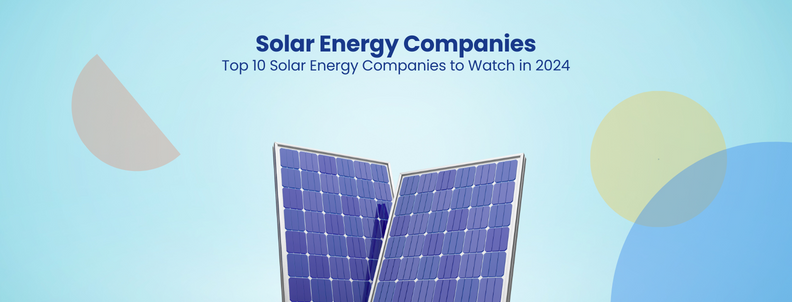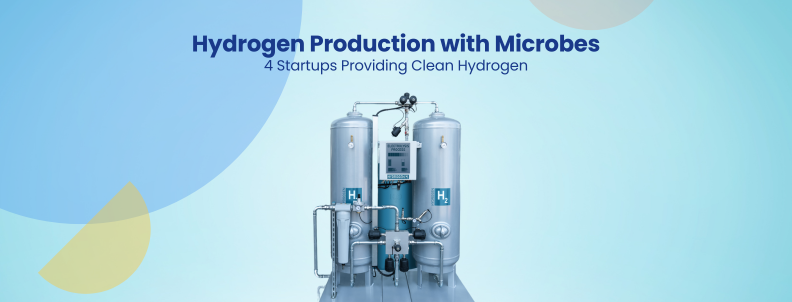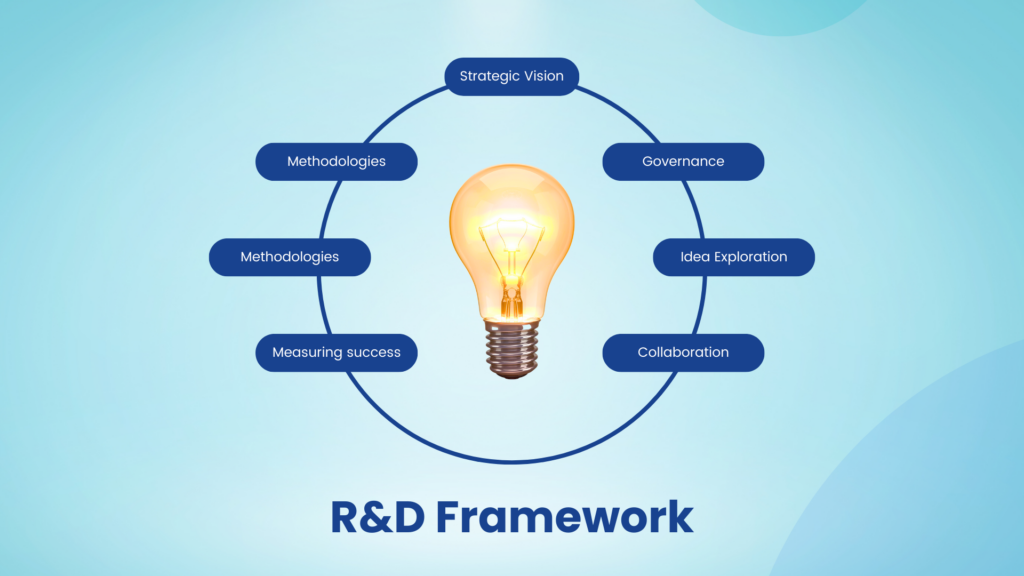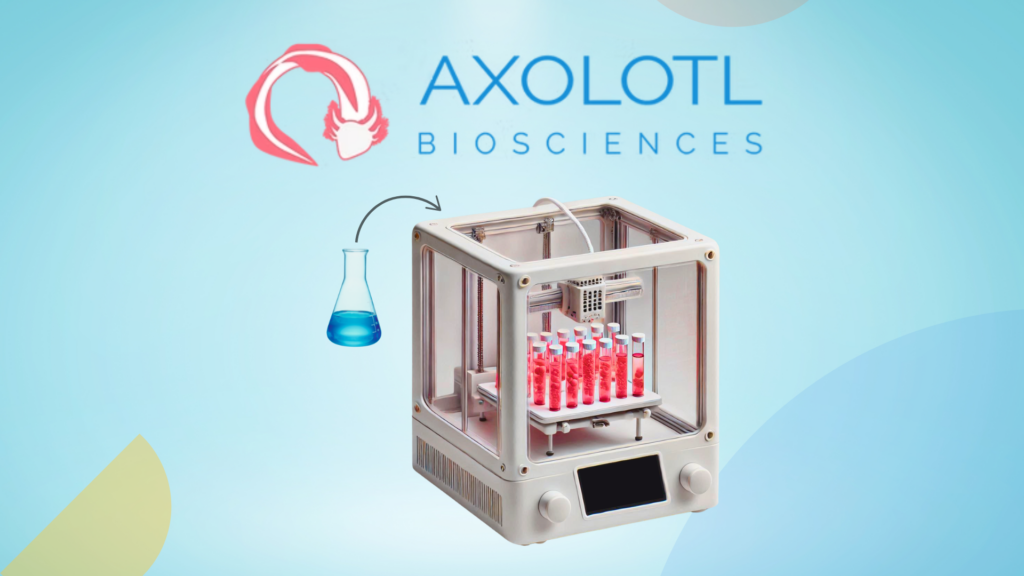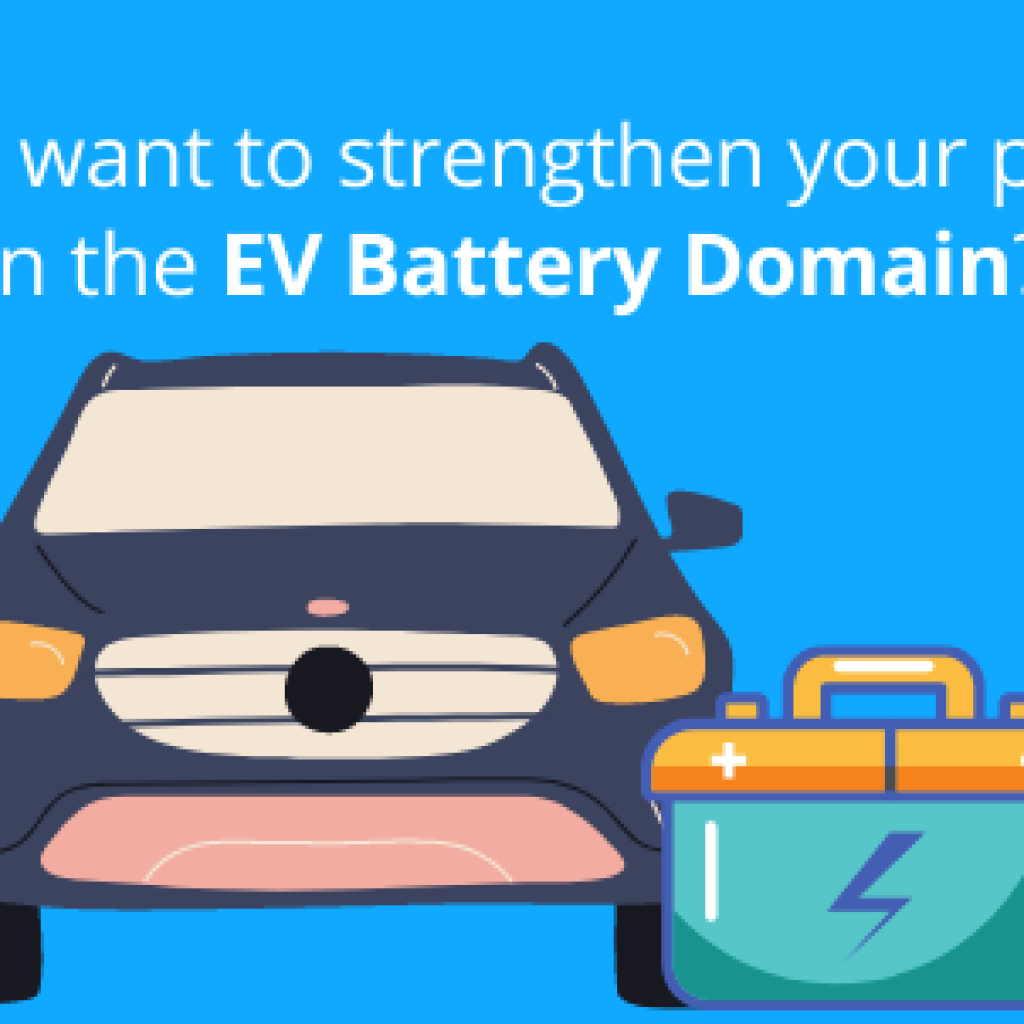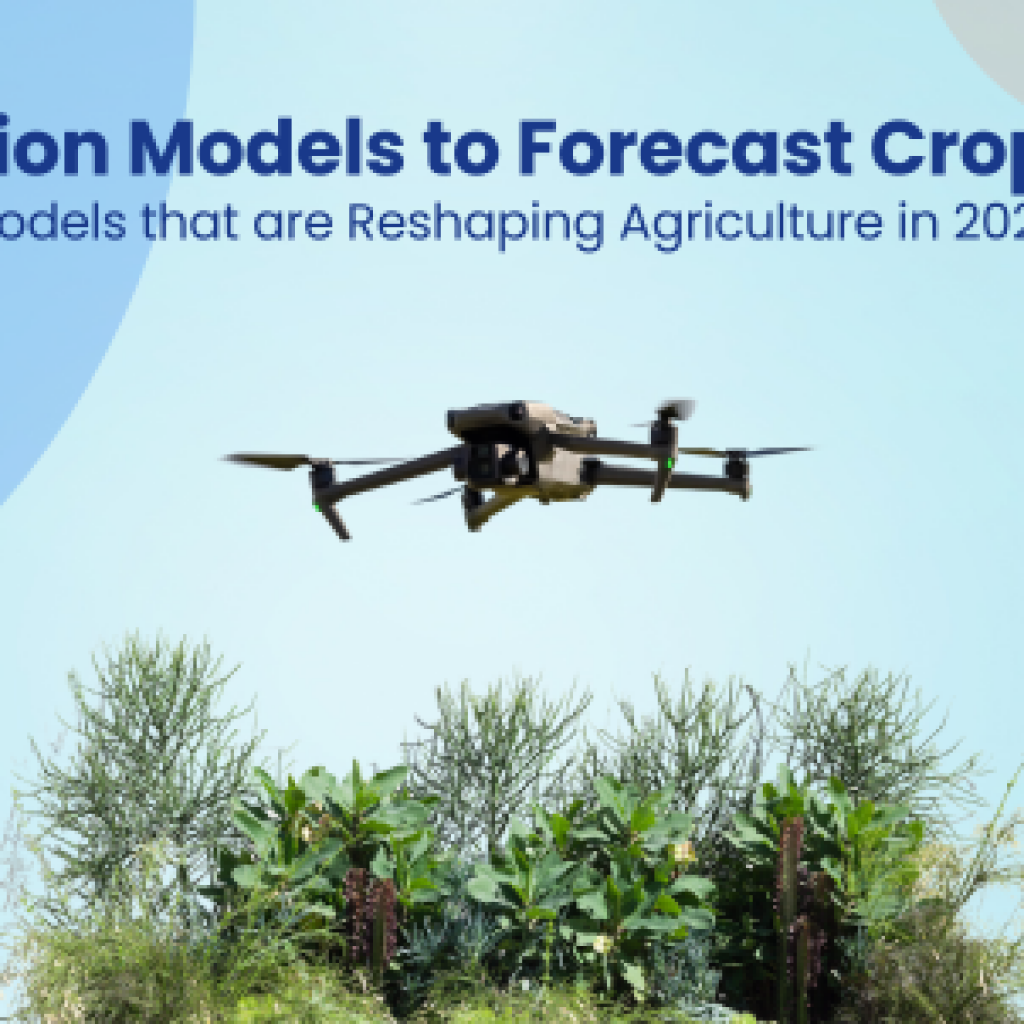The solar industry drastically reshaped the global energy landscape in 2023. In the first half of the year, solar energy contributed an impressive 45% to all new electricity-generating capacity added to the U.S. grid. Additionally, investments in solar deployment have reached over USD 1 billion a day, indicating the sector’s financial viability and crucial role in the transition to a cleaner energy future.
The expansion in manufacturing capacity for key components like solar PV modules and EV batteries further underscores the sector’s readiness for scalability and integration into broader clean energy systems.
This report comprehensively explores the top 10 solar energy companies with their R&D, inventions, notable partnerships, and sustainability initiatives for 2024.
1. NextEra Energy, Inc.
NextEra Energy is the world’s largest electric utility holding company by market capitalization, valued at over $120 billion as of November 2023. In 2022, NextEra Energy Inc. generated a revenue of nearly $21 billion, marking a significant increase of approximately 23 percent compared to the previous year.
Research and Development
The company is dedicated to advancing clean energy research and supporting R&D in technologies and energy sources that reduce greenhouse gas emissions.
An example is the recent hydrogen pilot program in Okeechobee County by Florida Power & Light (FPL), a subsidiary of NextEra Energy. The program aims to produce electricity using clean hydrogen. Launched in October 2023, the “FPL Cavendish NextGen Hydrogen Hub” uses water and solar energy to create hydrogen, blending it with natural gas to generate electricity. This aligns with FPL’s broader commitment to green energy and sustainability.
NextEra also planned to invest $65 million in the project, utilizing a 20-megawatt electrolyzer to produce hydrogen from water. This project represents NextEra’s first venture into green hydrogen, leveraging solar power from otherwise curtailed sources. The completion of the hydrogen hub, expected by December 2023, will advance green energy efforts and provide economic benefits to Okeechobee County, including an estimated $4 million in additional county taxes over a decade.
The company is also finding answers for how to protect insect pollinators and install solar panels through a study partnership with the University of Illinois Chicago’s Energy Resources Center (UIC-ERC), which started in 2022.
According to a study, pollinator habitats were put in five extensive solar PV facilities in the Midwest and Mid-Atlantic regions. One of these facilities is a subsidiary of NextEra Energy. The study examined these habitats’ economic, ecological, and performance impacts.
Innovative Technology
Patent for an AI Control System for Wind Turbines
Vice President Margie Sweezer-Fischer and her team secured a patent on March 7, 2023, for an AI control system tailored for wind turbines. Filed on May 21, 2021, the patent features an environmental engine and an AI ensemble engine.
The AI ensemble engine generates various models for the wind turbine, each characterizing a relationship between factors such as rotor speed, blade pitch, wind speed, and turbulence intensity. The system selects the model with the highest efficiency metric and simulates its execution to determine the best operating parameters for the wind turbine.
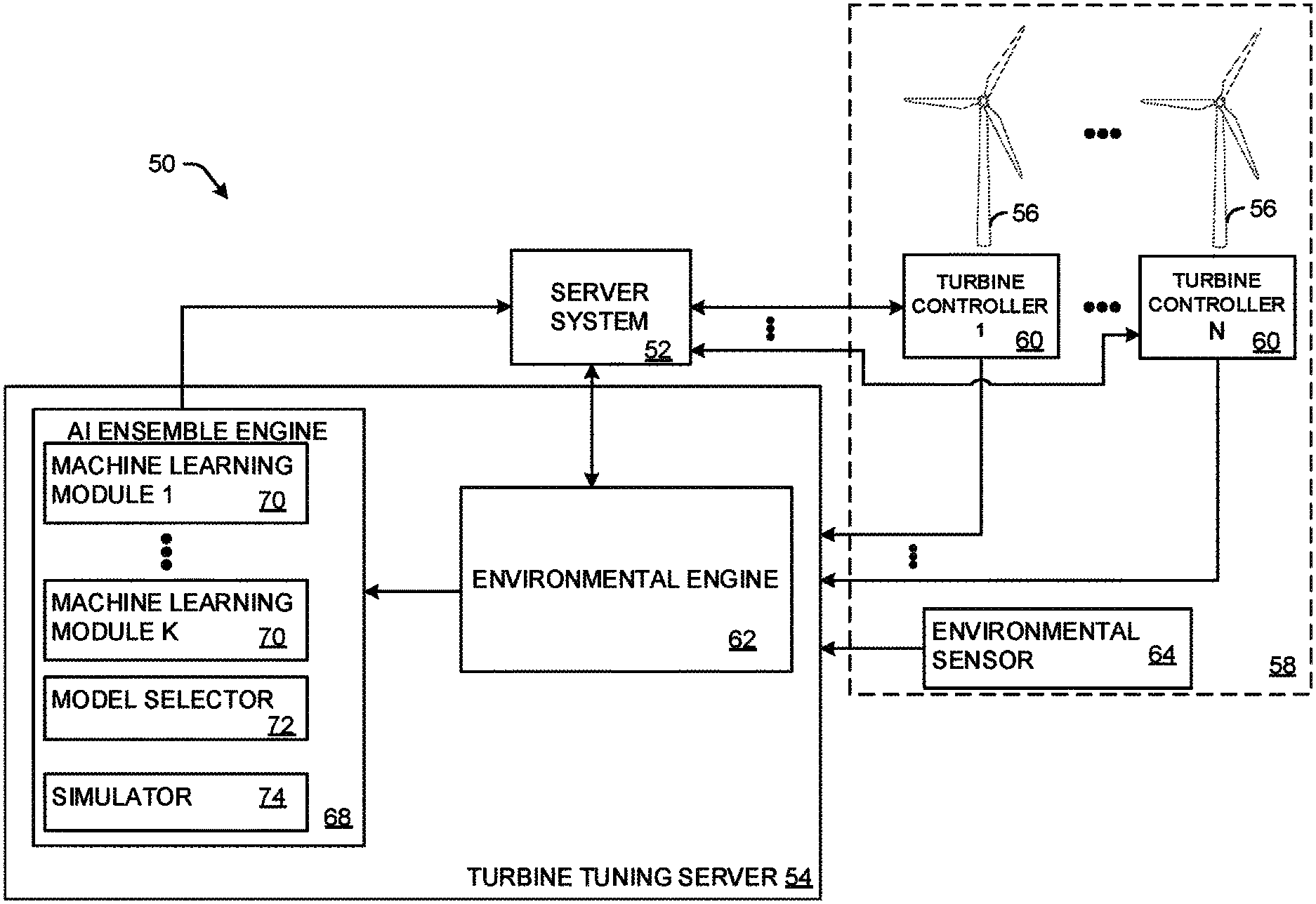
Source – Slate
35 Mules
In 2020, FPL introduced an innovation hub known as 35 Mules. To further promote the economic growth of the state of Florida and to stimulate the business environment, the hub aids entrepreneurs in the process of developing their game-changing ideas in energy, water, and energy-adjacent industries into a business enterprise that is based in Florida.
The first cohort of 35 Mules comprised six startups that FPL selected. A dedicated workspace was provided to the founders of these enterprises on the Juno Beach site of FPL for 12 to 18 months. In addition to receiving a grant to use toward their startup and free mentoring from executives, the entrepreneurs were also given access to subject matter specialists in Solar, Renewables, Innovation, and Smart Grid.
Sustainability Initiatives
NextEra Energy is ardently pursuing a range of sustainability initiatives. Their primary goal, “Real Zero,” is a commitment to achieve zero carbon emissions by 2045, as outlined in their Zero Carbon Blueprint™. This ambitious target, unparalleled in the U.S. utility sector, involves transitioning to entirely clean energy sources without additional costs to consumers. As part of these efforts, NextEra Energy has significantly reduced its carbon dioxide (CO2) emissions, achieving a 58% decrease by 2021 compared to the 2005 adjusted baseline.
Wheatridge Renewable Energy Project
NextEra Energy Resources, a subsidiary, focuses on developing renewable energy assets that are both cost-effective and long-term. It’s a leading figure in wind and solar energy generation and battery energy storage. Wheatridge Renewable Energy Facility is a notable project integrating wind, solar, and battery storage technologies. This facility includes approximately 120 wind turbines and can generate up to 300 megawatts from wind power alone.
Zero-emission Fleet
The company also plans to convert 6% of its light-duty vehicle fleet to electric or plug-in hybrids by 2030, with a goal of a fully zero-emission fleet by 2045. Advanced technologies like smart grids, drones, robots, and augmented reality are instrumental in managing power issues efficiently.
In their latest sustainability efforts, NextEra expects to build between 23-30 GW of new renewables between 2021 and 2024, including 12.15 to 17.3 GW in the 2023 to 2024 period. This development represents the largest expected two-year program in their history.
The company has been recognized for its commitment to sustainability, placed at the top of the electric and gas utilities industry on Fortune’s 2023 World’s Most Admired Companies List. It also reported a 98% reduction in dependency on foreign oil since 2001 and created thousands of high-paying American jobs through their investments. NextEra operates approximately 67 GW of energy resources as of 2023.
Collaborative Partnerships
First Student, Inc. and First Transit, Inc.
In 2021, NextEra Energy Resources, First Student, Inc., and First Transit, Inc. (now Transdev) agreed to form a joint venture aiming to electrify school and public vehicles in the U.S. and Canada.
Daimler Truck North America LLC and BlackRock Renewable Power
In 2022, following the signing of an MoU, NextEra Energy Resources, Daimler Truck North America LLC, and BlackRock Renewable Power have announced that the companies have laid the groundwork for a proposed joint venture (JV).
This partnership will design, establish, set up, and run a nationwide high-performance charging system for medium and heavy-duty battery electric and hydrogen fuel cell vehicles in the U.S. to speed up the deployment of carbon-neutral freight transportation. The new JV was set to begin operations in 2022. The initial funding was anticipated to be around $650 million, distributed equally among the three parties.
Collaboration with Sysco Corporation
In 2023, NextEra Energy Resources collaborated with Sysco Corporation to cut Sysco’s carbon pollution on a large scale. The science-based climate goal that Sysco has set for itself is to reduce Scope 1 and 2 emissions by 27.5% (from the CY2019 base year) by 2030. The company’s ambitions include obtaining 100% renewable energy worldwide.
NextEra Energy Resources is an expert in renewable energy with over 25 years of experience. It is uniquely positioned to help Sysco reach its goal by creating a custom strategy.
Patent Analysis
Nextera Energy has 98 patents globally, of which 52 have been granted. Of these 98 patents, more than 70% patents are active. US6985837B2 is the most popular patent in Nextera Energy’s portfolio. It has received 68 citations from Sky Motion Research, Accipiter Radar Technologies, and The Weather Channel.
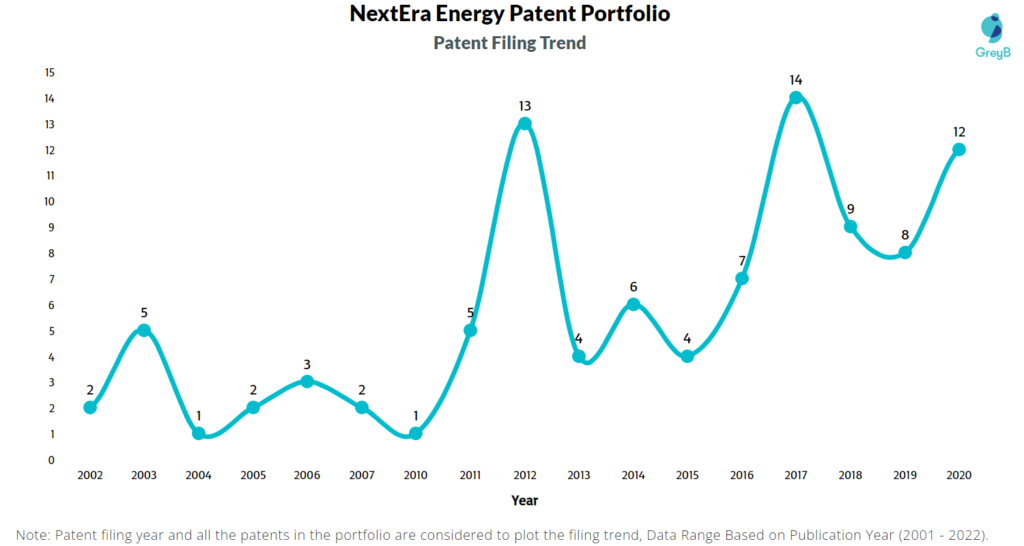
Source: Insights;Gate
Nextera Energy has filed the maximum number of patents in the United States of America, followed by China and Europe. The USA is the main focused R&D center and the origin country of NextEra Energy.
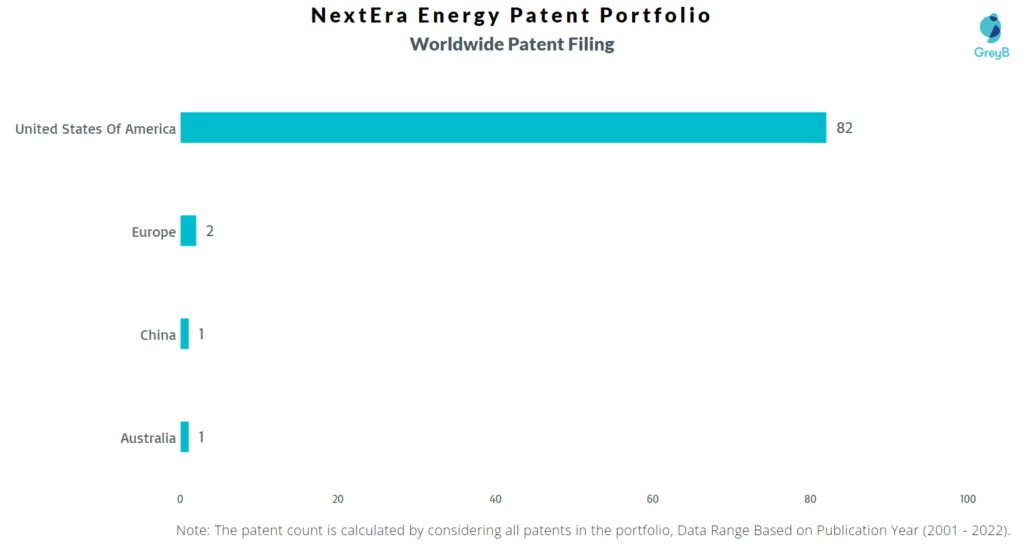
Source: Insights;Gate
Read more about NextEra’s patent portfolio here.
Discover the latest energy storage industry developments with our detailed Energy Storage Trend Report. It is a must-have to learn about the future of solar energy. Fill out the form below to get a copy delivered straight to your inbox. Don’t miss out on this valuable resource – secure your copy today!
2. LONGi Green Energy Technology Co., Ltd.
LONGi Green Energy Technology Co., Ltd., also known as LONGi Group, is renowned for being the world’s largest manufacturer of monocrystalline silicon wafers, a critical component in solar panels. The company’s research, manufacturing, and distribution of monocrystalline ingots have led it to break world solar efficiency records multiple times. LONGi Solar, a subsidiary of LONGi, reached a new industry record with a 23.6% conversion efficiency in P-type monocrystalline PERC solar cells.
In 2017, the company reported a significant achievement in bifacial module technology, with its “Hi-MO2” mono PERC bifacial module recording a bifaciality reading of 82.15%. This breakthrough is part of LONGi’s broader strategy to triple its capacity for producing monocrystalline ingots and wafers, aiming for a target of 45 GW by 2020.
LONGi’s recent initiatives include a comprehensive commitment to climate action, outlined in its 2023 Climate Action White Paper. The company has significantly reduced its operational emissions, demonstrating its dedication to sustainable practices.
LONGi has also presented a visionary strategy to promote energy equity, partnering with NGOs, non-profits, and humanitarian organizations.
Research and Development
LONGi invested RMB 7.14 billion in R&D in 2022. It achieved a record in solar cell conversion efficiency seven times between 2021 and 2022, culminating in a 26.81% conversion rate for its p-type HJT silicon solar cell. In July 2022, the company inaugurated its Central R&D Institute in Xi’an, China, focusing on next-generation solar product industrialization.
The institute combines a monocrystalline solar cell center with a pilot production line, preparing LONGi for future cell and module technologies. It aims to provide technical support and patent reserves for the industrialization of next-generation solar products.
In 2022, LONGi’s technology collaboration with Xi’an Jiaotong University gained recognition, and the company added a 54-cell module to its Hi-MO 5 product line in February. In March, it set a new world record for indium-free HJT cell efficiency and rose to the 724th place in Forbes’ 2022 Global 2000 List in May. The company also released its 2021 Sustainability Report globally in June 2022. LONGi’s ongoing focus on BC solar cells, tandem solar cells, hydrogen energy, and Building-Integrated Photovoltaics (BIPV) indicates their dedication to innovative solutions in renewable energy and sustainability.
The company has made notable strides in Hybrid Passivated Back Contact Cells (HPBC) production, expecting full-scale production of 30 GW capacity by the end of 2023. Its 30 GW TOPCon cell project is slated for full-scale production in early 2024.
LONGi’s strategic shift toward Back Contact (BC) solar cells over the next 5-6 years reflects its response to evolving photovoltaic technology and diversifying solar applications. The company aims to launch HPBC Pro for ground-mounted systems by 2025, focusing on rooftop applications in the Chinese market.
Innovative Technology
High-efficiency heterojunction (HJT) Silicon Solar Cell
LONGi has set a new world record for p-type HJT silicon solar cell efficiency, reaching an impressive 26.81%. This achievement, certified by the German Institut für Solarenergieforschung (ISFH; Institute for Solar Energy Research), marks a major advancement in solar cell technology. The HJT cells combine the benefits of crystalline silicon solar cells and thin-film technologies, offering higher efficiency and better temperature coefficients. This technology is a testament to LONGi’s commitment to enhancing photovoltaic conversion efficiency and driving down the cost of solar electricity.
Silicon-Perovskite Tandem Solar Cell
The company has set a new record in silicon-perovskite tandem solar cell efficiency, achieving a remarkable 33.9%. This development combines the strengths of silicon solar cells with perovskite materials. Perovskites are known for their high absorption coefficient and the ability to fine-tune the bandgap, making them ideal for tandem cell configurations. This innovation aligns with LONGi’s mission to develop high-performance solar cells and modules, contributing to the global push towards carbon neutrality and more efficient renewable energy solutions.
The company’s approach to integrating improved ingot pulling and wafer slicing techniques and promoting new auxiliary materials and equipment reinforces its status as an industry leader in manufacturing. It also focuses on BC cell technology, including HPBC, TBC, and HBC. LONGi introduced the Hi-MO6 series of products in 2023, which utilized Hybrid Passivated Back Contact (HPBC) cell technology for distributed solar applications worldwide. With its Hi-MO 6 photovoltaic module, LONGi claims to have achieved a maximum efficiency of 22.8% in mass production.
LONGi’s “High-efficiency Monocrystalline Bifacial Solar Cell and Module R&D and Industrialization” and “High-efficiency Heterojunction Solar Cell Design, Development, and Application” were awarded the first prize in the 2022 “Invention and Entrepreneurship Award of Innovation” presented by the China Association of Invention. Also, the company won the first prize in the Science and Technology Award by the China Renewable Energy Society.
Sustainability Initiatives
LONGi Green Energy received the “Sustainable Development Demonstration Enterprise Award” at the China Corporate Social Responsibility Summit in 2021. The company’s wafer line received the French Energy Regulatory Commission’s Evaluation Carbone Simplifiée (ECS) certification in 2022, covering the carbon footprint from raw material mining to manufacturing, shipping, and storage. With its commitment to optimizing its greenhouse gas emissions verification system, LONGi achieved a 2.01% reduction in operational GHG emissions in 2022 compared to 2021.
PLAN GET
The company is a member of the RE100, EP100, and EV100 Initiatives, focusing on “green power + green hydrogen” for global green transformation. At the Mutua Madrid Open, it launched its PLAN GET (Green, Energy, Tours) initiative in 2023. This plan aimed to create a healthy, shared, and sustainable global environment, starting with “Breathe New Life into Old Items” and installing green collectors for recycling used balls and PVC/PET products.
LIGHT Ideology
It established the LIGHT ideology in 2023 with “Lead,” “Innovative,” “Green,” “Harmonious,” and “Trustworthy” elements, aligning with the UN’s Sustainable Development Goals. LONGi also introduced the ALK Hi1 product line, which reduces DC power consumption and minimizes LCOH. With its sustainability initiatives, wildlife conservation at the Aquila Rescue Centre in Africa received photovoltaic modules for lighting and clean water provision. These photovoltaic modules reduce the reliance on diesel engines and enhance the living conditions of wildlife in conservation areas.
Net-zero Future
LONGi’s 2023 Climate Action White Paper highlights their commitment to sustainability, with a 40% reduction in operational emissions per unit of revenue in 2022. This reduction was achieved by sourcing 47% of their electricity consumption from sustainable alternatives, eliminating approximately 2.5 million tons of CO2 emissions. Moreover, 99.09% of the power consumed at LONGi’s Baoshan manufacturing plant in 2022 was green power.
The company’s dedication to a net-zero future is further evidenced by its approval from the Science-based Target Initiative (SBTi) for near-term targets and its adoption of the Task Force on Climate-related Financial Disclosure (TCFD) recommendations. Furthermore, LONGi’s investment in water-saving renovations and alternative water source projects in 2022 led to a 51% reduction in water consumption per unit of product in cell production compared to 2020.
Collaborative Partnerships
Solar Frontier
In 2023, LONGi Solar and Solar Frontier, a Japanese photovoltaic company, partnered to bring their respective competence areas to the Japanese solar industry. Building Integrated Photovoltaics (BIPV) is a rising market that LONGi and Solar Frontier aim to enter. The establishment of this partnership will be essential in achieving the goal of making Japan’s energy sources more sustainable and ecologically friendly.
Zetwerk
LONGi and Zetwerk, a $2.7 billion-valued managed industrial and consumer contract manufacturing marketplace, signed a pioneering partnership in 2023 to promote C&I and open-access marketplaces in India. This partnership uses Zetwerk’s on-demand manufacturing platform and LONGi’s expert solar technologies to fulfill the growing need for sustainable energy solutions and make solar power more affordable and environmentally friendly.
Solarever
In 2023, LONGi and Solarever signed a strategic partnership for 300MW of high-efficiency distributed generation solar modules. The goal of the collaboration is to pool resources and make the most significant possible effort to increase the local market share. This is motivated by a common vision to improve their presence in the Mexican market.
Patent Analysis
Longi has 3509 patents globally, out of which 2535 have been granted. Of these 3509 patents, more than 91% patents are active. CN208666355U is the most popular patent in Longi’s portfolio. So far, it has received 135 citations from companies like Zhejiang Aixu Solar Technology.
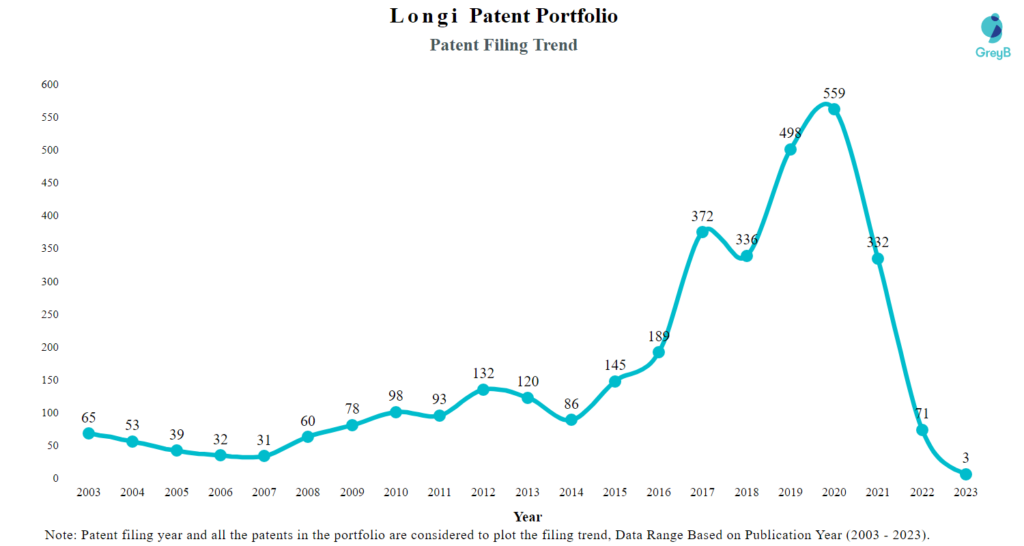
Source: Insights;Gate
Longi has filed the maximum number of patents in China, followed by the United States of America and Europe. China also seems to be its main R&D center and origin country.
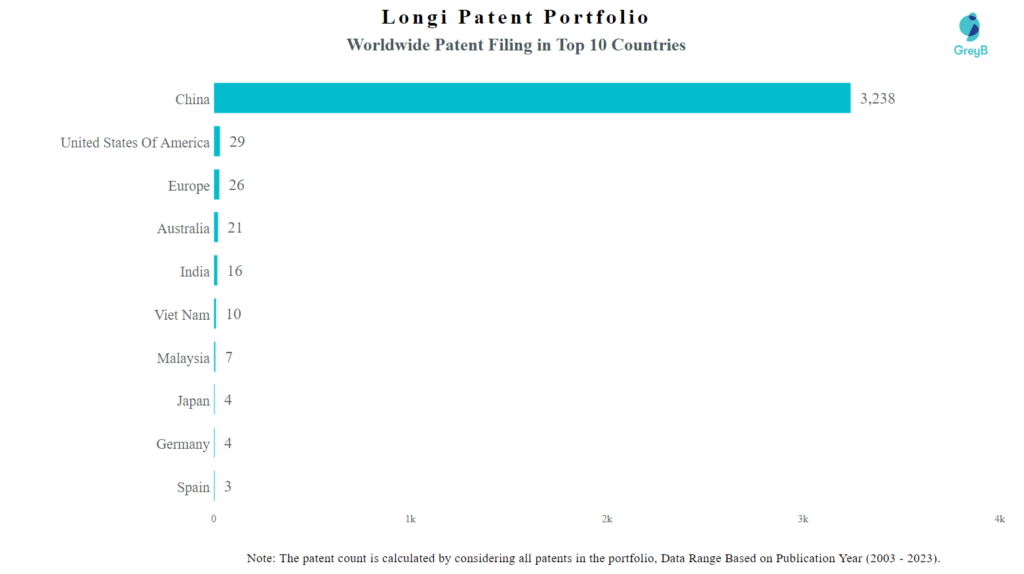
Source: Insights;Gate
Read more about Longi’s patent portfolio here.
3. JA Solar Holdings Co., Ltd.
JA Solar Holdings Co., Ltd. is a leading solar technology company committed to innovation and sustainability. With substantial R&D investments, JA Solar has developed groundbreaking technologies such as the n-type Bycium cell and DeepBlue 4.0 X module.
The company’s “Green to Green, Green to Grow, Green to Great” philosophy reflects its dedication to comprehensive sustainable practices. Its operational strategies effectively reduced greenhouse gas emissions intensity by 33%.
In 2023, the company continued to expand its manufacturing capacity. It announced a new project in China’s Ordos High-Tech Zone, which is expected to produce 30GW of ingots, 10GW of silicon wafers, and 10GW of modules annually. This expansion is part of JA Solar’s strategy to build a vertically integrated industry chain. Their 10GW module project in Xingtai began operations in May 2023.
JA Solar made significant strides in the Middle East, supplying modules for green hydrogen projects, and is planning to increase its production capacity to 80GW by early 2024.
The company has applied for over 1,000 patents as part of its strategy to consolidate its position as an industry leader. The company’s commitment to environmental, social, and corporate governance (ESG) goals was demonstrated through its investment in clean energy and developing technologies like TOPCon and heterojunction (HJT).
Research and Development
In a year-on-year comparison, JA invested RMB 4.608 billion in R&D in 2022, marking a 12.90% increase from the previous year. A significant focus of this investment was the development and large-scale production of its n-type Bycium cell, which achieved a record conversion efficiency of 25.30%.
JA Solar also joined the Science Based Targets project (SBTi) and formed a strategic agreement with CDP in 2022 to aid in decarbonizing the supply chain. In collaboration with enterprises, universities, and industry organizations, The company established the Photovoltaic Recycling Industry Development Cooperation Center in 2022. This initiative emphasizes the company’s commitment to promoting the development and enhancement of systems in PV recycling, focusing on policy standards, technology research, and innovation.
Its collaboration with the Beijing Institute of Technology’s research team in 2022 significantly advanced the development of high-efficiency perovskite optoelectronic devices with conversion efficiencies exceeding 20%. The JA Solar Research & Development Center further bolstered these efforts by establishing a perovskite solar cell laboratory under the technical guidance of the Beijing Institute of Technology, aiming to cultivate outstanding talents in solar cell technology.
In the first half of 2023, the company implemented several operational enhancements, including intensifying sales activities, constructing new production capacity, optimizing supply chains, and reinforcing R&D efforts to remain at the forefront of technological innovation. It also introduced talent incentive programs to attract and retain industry-leading talent.
JA Solar hosted the 2023 Global Photovoltaic Summit on March 9, 2023. The summit brought together global energy industry leaders to discuss the future of the photovoltaic market and sustainable development.
During the event, JA Solar’s senior manager of product strategy, Guo Lida, reported on photovoltaic technology innovation trends, highlighting that p-PERC modules would become mainstream products in the next two years, with n-type modules potentially leading after monocrystalline PERC. She also introduced JA Solar’s advanced module core products, including DeepBlue 3.0 and DeepBlue 4.0 X, and announced the launch of new products in 2023.
The summit featured insights into global PV system installation forecasts and the role of energy storage systems in energy transformation, as shared by Shi Xiaofeng, vice president of SUNGROW PV & Storage.
Innovative Technology
Since 2020, JA Solar has released three major product series: DeepBlue 3.0, DeepBlue 3.0 Pro, and DeepBlue 4.0 X. Each series of modules has an identical version with consistent sizes, which enhances power efficiency and durability while achieving perfect matching and upgrading at the system end.
Its DeepBlue 3.0 modules earned the Canton Fair Design Award in 2022 for their remarkable innovation, functionality, quality, aesthetics, and environmental protection performance. The sole award-winning PV module product was JA Solar DeepBlue 3.0 series modules.
DeepBlue 4.0 X
The company launched the DeepBlue 4.0 X in May 2022, which marked JA Solar’s entry into the n-type PV module market. This n-type module, featuring Bycium+ cell technology, delivers a remarkable power output of 625W and module efficiency of 22.4%. Designed with 182mm wafers and available in 54, 72, and 78 cell formats, the DeepBlue 4.0 X employs JA Solar’s patented high-density module encapsulation gapless flexible interconnection (GFI) technology. This innovative design addresses mechanical stress at cell interconnections, effectively reducing micro-cracking risk and ensuring higher reliability and energy yield.
The DeepBlue 4.0 X offers a 30-year module power warranty, with first-year degradation less than 1% and a linear degradation rate of 0.4% annually. This ensures that module performance remains above 87.4% even in its 30th year of operation. The module also boasts an energy yield 1.8% higher than p-PERC modules over a 30-year lifecycle, thanks to its optimized degradation warranty and the inherent advantages of n-type cells, which include a better temperature coefficient and lower operating temperature.
DeepBlue 4.0 Pro
JA Solar introduced the DeepBlue 4.0 Pro module before Intersolar Europe 2023. It features cells from n-type rectangular silicon wafers developed in-house. These cells have a long lifespan and low oxygen content. The open circuit voltage of these cells reaches 725mV, with a mass production efficiency of 25.3%.
Bycium Solar Cell Technology
The company’s Bycium solar cell, an n-type cell, represents a significant advancement in solar cell technology. Going into mass production in 2022 reflects JA Solar’s ongoing optimization of PERC technology, with mass-production cell efficiency reaching 23.90%.
It was licensed in January 2023 to construct the first national intellectual property operation center in the PV manufacturing area (excluding polycrystalline silicon).
Sustainability Initiatives
The solar giant is dedicated to providing clean and efficient energy worldwide and has consistently advanced its sustainability initiatives. It made significant strides in recycling and reuse in 2022. The Yangzhou base recycled over 400,000 solar cell carton packaging materials and over 20,000 pallets, indicating its commitment to circular economy principles. To regulate its carbon footprint, JA Solar routinely performs carbon inventory work. It joined the Science Based Targets initiative (SBTi) in November 2022, reinforcing its dedication to contributing to the global effort to limit warming to approximately 1.5°C.
Green Factories
JA Solar participates in CDP supply chain projects to enhance emission reduction performance in the supply chain and support suppliers in managing climate change risks.
In 2022, all JA Solar operational manufacturing bases achieved ISO14001 environmental management system certification. This milestone reflects the company’s progressive environmental management efforts across its facilities. By February 2023, six of its bases were recognized as “green factories” by the Ministry of Industry and Information Technology. In the same year, the Yangzhou Base conducted 99 environmental-related training sessions for 3,940 individuals, covering environmental laws, waste emission and treatment, and other environmental factors.
Carbon Reduction
In 2023, JA Solar took a significant step by joining the UNGC Climate Ambition Accelerator (CAA) program. Marking its third anniversary as a participant of the United Nations Global Compact (UNGC), JA Solar committed to the CAA’s six-month program to set Science-based Emissions Targets (SBTi) and transition to net zero. This initiative involves engaging all of JA Solar’s PV manufacturing bases and its Smart Renergy section in a sustainability initiative from September 2023 to March 2024. The program aims to raise awareness of climate change and carbon reduction among all staff and integrate environmental sustainability into JA Solar’s core business and production operations.
Collaborative Partnerships
HSA Energy
In 2023, JA Solar and HSA Energy signed a deal to work together on producing new-generation solar panels. Intending to achieve the top level of product portfolio in the area of renewable energy in Turkey, this agreement aims to reach the highest level of automation-based, high-tech solar panels. These panels will have high efficiency, dependability, and customer focus in power generation.
General Solar
In 2023, JA Solar entered a solar module arrangement with General Solar, a solar company based in Turkey. Both will work together to improve their relationship in developing the PV market, sharing resources, speeding up innovation, and other areas. The goal is to improve the PV industry’s development, construction, and operations and to work together to support the market’s high-quality and long-term growth.
BayWa r.e. Agreement
In 2023, JA Solar and BayWa r.e. entered a strategic cooperation agreement that aims to distribute solar modules in the Asia-Pacific region, further expanding their collaboration in the distribution market there. Through this partnership, both parties can fully capitalize on their Capabilities in the photovoltaics (PV) field. It will help foster the growth of the distributed PV market in the region.
Recommended reading: Research on Concentrated Solar Power Technology
4. Hanwha Q CELLS Co., Ltd.
Hanwha Q CELLS Co., Ltd., a subsidiary of Hanwha Solutions, is known for its innovative contributions and technological advancements in solar energy.
The company announced a $2.5 billion investment to establish the first fully integrated silicon-based solar supply chain in the United States in 2022 and 2023.
This ambitious project in Bartow County, Georgia, is set to manufacture 3.3 GW of solar ingots, wafers, cells, and finished modules, bolstering the U.S. solar market, where Qcells has been a top player for five years. Its facility in Dalton, Georgia, will assemble 2 GW of modules, with plans to increase production by another 5.1 GW, totaling 8.4 GW in Georgia by 2024.
Hanwha Q CELLS showcased its advanced 400 W n-type solar module with a power conversion efficiency of 22.3% in 2022. Developed at its R&D facility in Thalheim, Germany, this technology is based on a unique solar cell configuration that allows full area passivation and contact, enhancing efficiency and performance.
Research and Development
Hanwha Q CELLS formed a consortium in 2021 with Yeongnam University and SME Moden Solar focused on “Development and Demonstration of the Standard Agricultural Solar Model to Raise Crop Productivity” as part of a national project. The next year, Hanwha Q CELLS participated in the PEPPERONI consortium, a four-year R&D project with €14.5 million in EU funds, focusing on tandem technology. Hanwha Q CELLS’ European base in Germany set up a pilot line for this project, aiming to make tandem cells and modules publicly available using their Q.ANTUM cell manufacturing technology. The company planned to mass-produce its tandem cells after June 2026, based on the project’s dual-track R&D strategy results.
Hanwha Q CELLS further planned to expand its photovoltaic production facilities and invest KRW 1.5 trillion in R&D activities by 2025 to strengthen its position in the photovoltaic market further. It accelerated R&D to maximize the benefits of the U.S. Inflation Reduction Act in 2023.
The company aimed to mass-produce cells using perovskite by 2026. It was developing TOPCon (tunnel oxide passivated contact) solar cells and planning to expand its presence in the U.S. solar energy market. The company’s Dalton plant in Georgia was expected to reach an annual production capacity of 3.1 gigawatts by the second half of the next year.
Researchers in Germany collaborated with Helmholtz-Zentrum Berlin to develop tandem cells using perovskite and silicon, which is seen as an intermediary step to developing cells using perovskite only.
Innovative Technology
Hanwha Motiev
In 2022, Hanwha Q CELLS launched Hanwha Motiev, marking its expansion beyond photovoltaic power plants into the electric vehicle charging sector.
This new brand represents the company’s strategic move into the electric vehicle (EV) charging service market, in line with South Korea’s goal to increase the number of private and commercial EV chargers significantly. South Korea’s EV market was booming in early 2022, with over 230,000 registered EVs, a 71.5% increase from 2020. To broaden its customer base, the company plans to install 2,000 to 3,000 charging systems, including fast charging systems, primarily in parking garages for Hanwha and commercial buildings.
Hanwha Motiev aims to provide a comprehensive one-stop service encompassing consulting, infrastructure construction, business operation, and maintenance for charging service operators or entities interested in installing chargers in their facilities. This initiative is part of a broader effort to support South Korea’s ambitious campaign to achieve carbon neutrality by 2050.
Tunnel Oxide Passivated Contact (TOPCon) Facilities
The company invested a total of KRW 64 billion in TOPCon facilities, with plans to start manufacturing TOPCon cells in the second half of 2022. These high-efficiency TOPCon technology-driven cell lines were projected to give Hanwha Q CELLS the highest cell production capacity in Korea, reaching 5.4 GW.
Hapcheon Dam Floating Solar Power Plant
In November 2021, Hanwha Q CELLS began operating a floating solar power plant at Hapcheon Dam. With a capacity of 41 megawatts, it is one of the largest dam-based solar power plants globally, supplying power to approximately 60,000 people or 20,000 families annually.
Q.antum Neo and Q.Tron Technologies
The company plans to produce solar panels using n-type cells with passivating contacts. This new n-type technology, an advancement of its Q.antum cell technology, was named Q.antum Neo. The associated module, Q.Tron, represents a significant step forward in solar panel technology.
Large Wafer Production
Hanwha Q CELLS invested KRW 157.4 billion in its Jincheon and Eumseong plants to construct production lines dedicated to large wafers. This investment signifies the company’s commitment to advancing solar panel manufacturing technology.
Sustainability Initiatives
Hanwha Q CELLS Co., Ltd. is committed to sustainable development and actively engages in corporate social responsibility with initiatives like waste management, circular economy, and renewable energy. The company met with local businesses and community groups in September 2021 to work on Berlin’s solar city master plan to help the city achieve carbon neutrality by 2050. The plan involves constructing 4.4 GW of solar power plants to meet 25% of Berlin’s electricity needs.
RE100
In its domestic plants, Hanwha Q CELLS was the first company in the country to declare Renewable Energy 100% (RE100) and expanded this commitment to all of its businesses in September 2021. The company supports genuine efforts to reduce greenhouse gas emissions through various schemes under the K-RE100 initiative.
Making a Clean School
In 2022, Hanwha renewed the “Making a Clean School” campaign for elementary schools, focusing on creating a healthy and clean student environment. The initiative includes installing solar power generation facilities, setting up green walls, and providing air purifiers and ventilators. It has impacted four schools, benefiting over 3,500 students across 140 classes.
EPR And K-RE100 Campaign
It adopted the Extended Producer Responsibility (EPR) program in 2023 for solar panels, establishing a waste panel recycling system and eco-friendly recycling methods.
The company also announced its participation in the K-RE100 campaign, aiming to transition all its electricity consumption to renewable sources by 2050. This initiative focuses on using solar and wind power to meet the company’s energy needs and aligns with Hanwha Q CELLS’ commitment to reusing and recycling solar modules.
Carbon Footprint Management
Hanwha Q CELLS is also involved in carbon footprint management. It diversifies supply and demand when purchasing cells for PV modules and has been producing environment-friendly, low-carbon PV panels to control greenhouse gas emissions. The company’s corporate social responsibility program, “Hanwha Happy Sunshine Project,” also donates solar power-generating systems to social welfare centers in South Korea. This initiative produces up to 216 kWh of electricity, equivalent to the amount used by 70 households.
3.3 GW in US
Moreover, in 2023, Hanwha restarted the REC Silicon plant in Moses Lake, Washington, with plans to reach full capacity by the end of 2024. It announced a $2.5 billion investment in 2023 to establish a fully integrated silicon-based solar supply chain in the United States, marking the largest investment in U.S. solar history. This initiative by Qcells, a subsidiary of Hanwha Solutions, includes plans to manufacture 3.3 GW of solar ingots, wafers, cells, and finished modules in Bartow County, Georgia, and boost production in Dalton, Georgia, to 8.4 GW by 2024.
Hanwa also entered into a $3 billion supply agreement for U.S.-made polysilicon with REC Silicon ASA, further advancing its commitment to sustainable solar manufacturing and reducing its carbon footprint.
Collaborative Partnerships
NUNCATS
The UK’s Old Buckenham Airfield, electric light aircraft pioneer NUNCATS, and solar technology giant Hanwha Q CELLS came together in 2022 to break new ground and make solar-powered aviation possible. This association allowed Hanwha Q CELLS to showcase the remarkable dependability and efficiency of its solar modules. Hanwha Q CELLS’ patent-protected passivation technology Q.ANTUM was used to make the Q.PEAK DUO L-G8 module series. This gave them even better long-term yield security and low-maintenance performance backed by a 25-year performance guarantee.
Ross Kent, Head of Sales for Hanwha Q CELLS UK, said, “Solar power has torn down all sorts of barriers to sustainable progress over the past few years, and the aviation industry is next in its sights. The capacity of solar to change the landscape of light aircraft transportation is vast, and Hanwha Q CELLS is therefore delighted to have partaken in this unique pilot project with NUNCATS that we hope will be quickly scaled up to begin meeting the needs of remote communities around the world – affordably and efficiently.”
Microsoft Corporation
In 2023, Hanwha Q CELLS and Microsoft Corp. worked together to build a robust supply chain for new renewable energy capacity that will need at least 2.5 gigawatts of solar panels and other services, which is enough to power more than 400,000 homes. Microsoft has signed Power Purchase Agreements (PPAs) with Hanwha Qcell to work on new solar projects and provide panels and planning, procurement, and construction (EPC) services for specific solar projects.
Summit Ridge Energy
In 2023, Summit Ridge Energy entered into a contract with Hanwha Q CELLS to acquire 1.2 gigawatts (GW) of solar panels to aid its development pipeline. Over the next four years, SRE will use solar panels to build more than 350 solar projects. The first 200 megawatts (MW) will be implemented before the end of 2023. After completion, the projects will produce enough clean energy to power about 140,000 homes and businesses. This will make SRE one of the nation’s top community solar providers. The deal between SRE and Hanwha Q CELLS also includes 20 MWh of storage for energy.
Patent Analysis
Hanwha Corporation has 3114 patents globally, of which 2212 have been granted, and more than 63% of patents are active. US20100021718A1 is the most popular patent in Hanwha Corporation’s portfolio, with 97 citations from companies like BYD Company, Hyundai Motor, Boeing, and more.
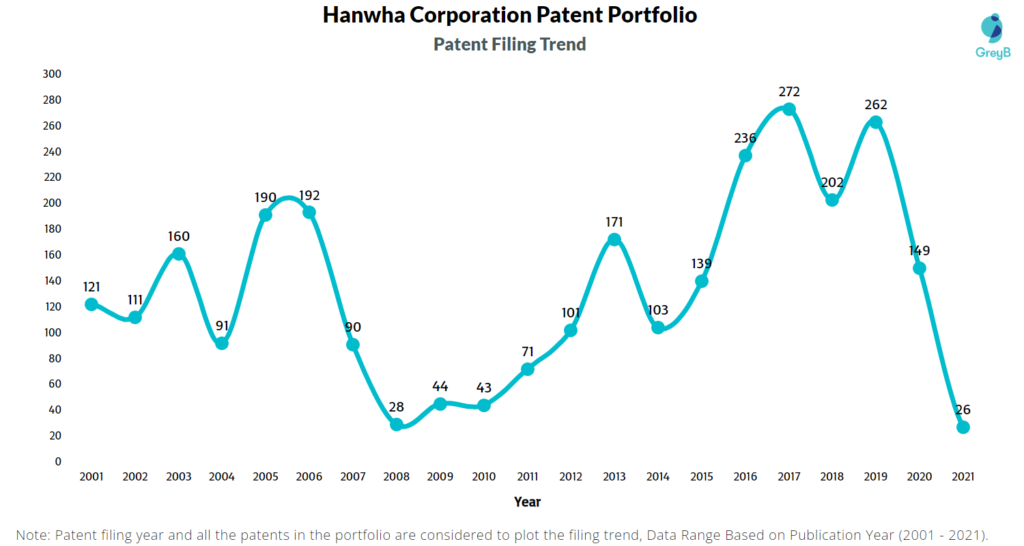
Source: Insights;Gate
Hanwha Corporation has filed the maximum number of patents in Korea, followed by the USA and Germany. Korea is also its main R&D center and the country of origin.
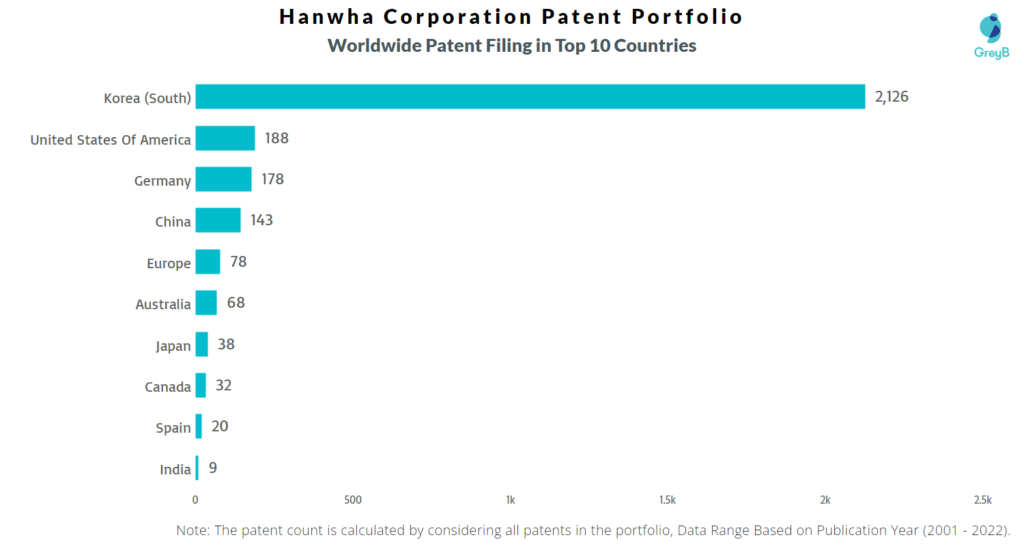
Source: Insights;Gate
Read more about Hanwha Corporation’s patent portfolio here.
5. GCL-Poly Energy Holdings Limited
GCL-Poly Energy Holdings Limited is a renowned company in China’s solar sector for its polysilicon and electronic wafer supplies.
In 2016, GCL Technology acquired assets worth $150 million from SunEdison, further expanding its capabilities. Next year, the company invested over $832 million to construct a 60,000-ton polysilicon plant in China, enhancing its production capacity and technological advancements in solar energy.
The company announced a significant breakthrough in FBR technology in 2021, enabling the mass production of granular silicon and expanding its production capacity from 6,000 to 10,000 metric tons.
Research and Development
GCL Technology showcased its commitment to innovation by investing RMB 1.686 billion in Research and Development (R&D) in 2022, a significant increase of 61.99% from the previous year, accounting for 4.69% of its annual revenue.
The company adheres to a forward-thinking R&D philosophy of maintaining “one generation in production, one generation in research and development, one generation in reserve, and one generation in nurture.” This approach has enabled GCL Technology to rapidly achieve granular silicon production capacity and accelerate the R&D of new generations of granular silicon technology. This includes Continuous CZ (CCz) reserves and exploration of other new technologies, such as perovskite.
GCL Technology’s dedication to R&D is further evidenced by its investment of 3% of its annual revenue in scientific and technological research. The company holds approximately 3,000 patents, reflecting its strong focus on innovation and intellectual property rights. The GCL Perovskite team is particularly noteworthy for their efforts to surpass the expected conversion efficiency of 18% for standard-sized perovskite modules. Their current focus is on the research and development of next-generation perovskite tandem modules.
Innovative Technology
Granular Silicon Technology
GCL Technology has been focusing on granular silicon technology, a crucial step in leading the solar industry’s innovation and technical transformation.
In December 2022, Inner Mongolia Xinyuan Silicon Material Technology Co., Ltd., associated with GCL Technology, commenced the first module of its Phase 1 project. Located in Inner Mongolia, this facility specializes in producing granular and nano silicon, marking a significant advancement in silicon materials production.
The first phase of the project includes setting up a base capable of producing 100,000 metric tons of granular silicon. Additionally, the company is enhancing its capability to produce 150,000 metric tons of high-purity nanosilicon. GCL Technology is expanding its production capacities in various regions, including Inner Mongolia, to boost its annual production to 500,000 tons of granular polysilicon and 300,000 tons of nano-silicon.
Kunshan GCL Optoelectronic Material Co., Ltd.
In 2022, Kunshan GCL Optoelectronic Material Co., Ltd., a subsidiary of GCL Technology, developed a 1m x 2m perovskite module. This largest-size perovskite module achieved a photoelectric conversion efficiency of 16% and is expected to surpass 18% by the end of 2023.
Jiangsu Zhongneng’s Fluidized Bed Reactor (FBR) Project
Jiangsu Zhongneng, another subsidiary of GCL-Poly Energy Holdings, completed equipment installation for its 20,000-ton Fluidized Bed Reactor (FBR) based granular silicon modularization projection in March 2022. This increased the company’s annual granular silicon production capacity to 30,000 tons. The company is also advancing other FBR projects in Leshan, Sichuan Province, and Baotou, Inner Mongolia.
Leshan 100,000-ton Granular Silicon Project
In July 2022, GCL Technology inaugurated the first production line at its Leshan 100,000-ton Granular Silicon Project. This facility will become one of the world’s largest granular silicon production sites.
Sustainability Initiatives
GCL Technology enhanced its partnerships in 2022 with major corporations to improve energy management and invested in silicon powder production in Wuda District, Wuhai City, and the Inner Mongolia Autonomous Region. This project utilized heat from high-temperature waste gas for electricity production, reducing coal usage and easing the load on local energy systems.
New Exhaust Gas System
The company’s wastewater treatment exhaust gas increased due to capacity growth at Suzhou GCL. The retrofitting and improvement of the exhaust gas system culminated in October 2022 with an investment of RMB 4.48 million. This upgrade increased exhaust gas disposal capacity from 20,000 to 50,000 cubic meters per hour.
Low Carbon Practices
Xuzhou GCL established a monocrystalline plant to demonstrate granular silicon technology, with a daily water replenishment capacity for the cooling tower at 1,800 tons. The company initiated a project to recycle sewage for truncation, rod cutting, and grounding in January 2022, achieving a 66.7% recovery rate and recycling 1,200 tons of water per day.
Furthermore, GCL Technology launched the “GCL Low-carbon Competition in Spring” in 2022, aligning with the Internet Tree Planting Day theme. This program utilized the Ant Forest platform to encourage low-carbon practices among its participants. A total of 615 individuals participated, with 222 reducing their carbon footprint by 834,562.65 kg and 182 planting 2,570 trees through “cloud planting.”
Alignment With SDGs
GCL’s commitment to sustainability is deeply integrated into its corporate mission, focusing on green development and continuously improving the human living environment. The company promotes a green, low-carbon, and recycling development model, aiming to provide clean and efficient energy products and services. This commitment extends to contributing to the United Nations SDGs, including ensuring employee health and safety, providing quality education, fostering gender equality, and promoting clean water and sanitation.
The company also addresses climate change through greenhouse gas management and maintains a responsible supply chain for responsible consumption and production. Its efforts contribute to sustainable cities and communities, life on land, and peace, justice, and strong institutions. GCL’s focus on social aspects includes attention to employee health and career progression, support for rural revitalization and social welfare, and building a green and sustainable society.
Collaborative Partnerships
TCL Technology
In 2022, GCL signed a framework agreement with TCL Technology, a semiconductor displays and materials manufacturer, to broaden its semiconductor-related business. The companies planned for a $1.9 billion investment into a silicon materials plant in the capital of Inner Mongolia’s northern autonomous area, Hohhot. This partnership focuses on constructing a facility for electronic-grade polysilicon and another for granular silicon production, catering to the electronics and renewable energy markets.
Overseas Factory in Saudi Arabia
GCL Technology Holdings was in advanced talks with Saudi Arabia in 2023 regarding establishing its first overseas factory. This was a significant step as both countries aimed to widen their energy collaboration beyond the conventional oil-based ties. The company plans to construct a facility in Saudi Arabia that will produce 120,000 tons of polysilicon annually.
The factory is expected to begin operations by the year 2025. In addition to deploying an on-site team of roughly 12 persons and aggressively engaging with local government agencies and the Royal Commission, the company had already begun registering its business in the country.
GCL And The Republic of China
Furthermore, GCL and TCL inked separate deals with the Inner Mongolia and Hohhot governments to carry out their joint investment, which would generally receive a policy incentive. Transforming TCL’s existing facilities into a monocrystalline silicon production site that is “internationally competitive” will be how these companies will implement their business plan.
CGL stated, “The parties intend to carry out in-depth cooperation through investing in new [solar-grade], and electronic-grade silicon material projects.”
While you are exploring the landscape of the solar industry and its prominent players, we would like to offer our exclusive Energy Storage Trend Report. This comprehensive document offers insights into the latest industry developments and the future of the energy industry. Simply fill out the form below and receive an exclusive copy directly in your mailbox.
6. Trina Solar Limited
Trina Solar Limited is a vertically integrated photovoltaic giant with substantial subsidiaries like Trina Solar (U.S.) Inc. and Changzhou Trina Solar Energy Co., Ltd., extending its reach across continents. The company’s Leshan 100,000-ton Granular Silicon Project inaugurated its first production line in July 2022. The project is a game-changer in solar cell production.
Trina Solar has a foray into intelligent micro-grid and multi-energy complementary systems. The company also collaborated on cutting-edge battery technology to further empower the renewable energy revolution.
Research and Development
Trina Solar Limited’s R&D initiatives emphasize elevating solar cell conversion efficiency and manufacturing yields. In 2022, Trina Solar invested CNY 1,221 million in R&D, a 32% increase from the previous year.
TrinaTracker, a key company division, operates two R&D&I hubs in Changzhou, China, and Viana, Spain, driving innovation in the solar sector. These hubs and the company’s manufacturing facilities have a formidable production capacity of 8 GW.
The solar giant strategically allocates a substantial part of its operating income, more than 5% of its active income, to R&D activities. This investment is focused on developing efficient and cost-effective solar panels. The company also creates specialized PV system solutions. For this, it has conducted extensive field research that helps it tailor its products to meet the diverse needs of different scenarios, thereby improving the effectiveness of PV systems in various settings.
In 2022, Trina Solar formed the “China Energy Storage Industry Innovation Alliance” with 62 organizations, including CEEC and CATL. This alliance aims to unite resources from all parts of the new-type energy storage industry to optimize supply, industry, value, and innovation chains. The company established a strategic collaboration with the Shanghai Minhang District Government and Shanghai Jiao Tong University, leading to the creation of the “Trina Solar Digital Energy Research Academy.”
Its State Key Laboratory of PV Science and Technology (SKL PVST) is a national hub for photovoltaic technology advancement. The lab focuses on PV materials, cell and module technologies, and system performance. It has established 27 industry standards and holds 423 invention patents. The lab developed the Honey Ultra modules with record-breaking solar cell efficiency of 20.54% in polycrystalline silicon module output power. It has successfully mass-produced new Building-Integrated Photovoltaics (BIPV) components known for their reliability and ease of installation.
Trina Solar’s recent innovations include announcing the 600W+ Photovoltaic Open Innovation Ecological Alliance in July 2023. This alliance, consisting of 39 firms, aims to create a collaborative ecosystem for developing next-generation technology platforms and ultra-high power modules. The company showcased its commitment to advancing solar energy solutions at the Renpower Uzbekistan 2023 event in creating a new PV industrial ecosystem. It has also partnered with Dongfang Electric International Corporation to supply 510MW of solar trackers for solar projects in Uzbekistan, contributing substantially to the nation’s shift toward a green economy.
The company has also mass-produced Vertex N 700W+ series modules with an efficiency of 22.5%, making it the first to mass-produce modules using the 210mm technology platform with i-TOPCon cell technology. The company’s innovative approach to solar tracking and energy storage and its global recognition, including a spot on the 2023 Forbes China Top 50 Innovative Companies list, underscores its leadership in the solar energy sector.
Innovative Technology
TrinaTracker’s Vanguard 2P
TrinaTracker established a smart tracker manufacturing unit in Salvador, Brazil, in 2023. The factory has a 2.5GW annual production capacity, bringing TrinaTracker’s global production capacity to 10GW.
The company announced the global debut of the second-generation Vanguard 2P tracker with its latest multi-motor control technology. The initial mechanical mechanism was substituted with a multi-motor control system in the second generation of Vanguard 2P. The self-developed intelligent mechanism allows for synchronizing several motors to minimize potential structure failures, saving time and money on operations and maintenance.
Kesses
In September 2022, TrinaTracker finalized “Kesses,” a 55 MW PV installation in Kenya. TrinaTracker deployed an engineering team for technical training and on-site supervision because photovoltaic is a novel technology in Uasin Gishu County, ensuring the assembly’s excellent quality and the project’s long-term reliability.
SuperTrack And Vanguard 1P
In 2022, TrinaTracker debuted SuperTrack, a new intelligent control system, and the Vanguard 1P tracker at the Intersolar Europe Exhibition in Munich. SuperTrack’s Smart Tracking algorithm enhances energy generation by up to 3% to 8% compared to typical tracking algorithms.
At the World Future Exhibition Summit 2022 in Abu Dhabi, the business unveiled the Vanguard 1P single-row tracker. The Vanguard 1P series, entirely compatible with ultra-high-power modules that range from 400W to 670W+, expands the tracker’s applications.
The TrinaTracker Agile 1P Dual Row was officially launched internationally by the company in 2021. Its Agile 1P tracker is entirely compatible with modules ranging in power from 400W to 670W+. Agile 1P improves tracker system stability by utilizing a unique multi-drive (dual slewing) mechanism with an exclusively worldwide patented spherical bearing. It efficiently lowers the aeroelastic effect of the system, improves load transfer efficiency, eliminates rotation error, and improves the overall structure.
Sustainability Initiatives
Trina Solar was the first in the photovoltaic (PV) industry to receive mutual recognition marks from UL Solutions and Environmental Product Declaration (EPD) in 2021. The next year, it was honored as an “Industrial Product Green Design Demonstration Enterprise,” highlighting its commitment to green and sustainable practices.
Material Recycling
The company has actively engaged in material recycling. In 2022, approximately 80% of its packaging materials were recycled, reflecting its dedication to the “3Rs (Reduce, Reuse, and Recycle)” policy. The company is also working towards achieving “zero” landfill waste by 2030.
GHGs
Trina Solar has set ambitious goals for managing greenhouse gas emissions or carbon emissions. By 2025, the company aims to reduce the greenhouse gas (GHG) emissions intensity of its solar photovoltaic products by 50% compared to 2020 levels. As of 2022, the GHG emissions per unit of cell products stood at 23.76 tons of CO2 equivalent/MW, while module products emitted 9.20 tons of CO2 equivalent/MW. It was a 50.81% and 61.88% drop from the baseline year 2020, respectively.
Energy Management
Trina Solar’s energy management efforts include a commitment to reduce integrated energy consumption across all product categories by 40% by 2025, relative to 2020. The company is also pursuing 100% renewable energy use in its global manufacturing and operations by 2030. This includes a plan to save 100 million kWh of power consumption from 2021 to 2030 through energy-saving and consumption-reduction projects.
Water Resources Management
By 2025, the company plans to reduce the water consumption intensity of its solar PV, cell, and module products by 20% compared to 2020. The current water consumption per unit of cell products is 384.89 tons/MW, while module products consume 39.83 tons/MW.
Green Factories and Net Zero Factories Goal
The company enhanced its Environmental, Health, and Safety (EHS) training and organizational structure in 2022. It encourages all its global facilities to obtain certifications such as “Green Factory” and “Net Zero Factory,” promoting eco-friendly and low-carbon operations. By 2030, the company aims to use 100% renewable energy in its global manufacturing and operations, welcoming collaboration with international partners and stakeholders to combat climate change and build a sustainable future.
Collaborative Partnerships
CounterpointeSRE
Trina Solar announced a new partnership with CounterpointeSRE in 2021. CounterpointeSRE offers capital for environment-friendly and energy-efficient commercial and multifamily building infrastructure. The collaboration between Trina Solar and CounterpointeSRE facilitates the creation of new possibilities for commercial and industrial (C&I) solar developers and procurement, engineering, and construction companies (EPCs) who may be unaware of significant financing choices.
“We are seeing a significant uptick in large-scale solar adoption with C-PACE, particularly by corporates who are focused on meeting ESG goals. By offering our financing solutions in concert with Trina Solar’s position in the marketplace, we are going to help companies and commercial property owners move the needle significantly,” said Eric Alini, managing partner at CounterpointeSRE.
Power Electronics
In 2022, Trina Solar collaborated with Power Electronics to construct a huge photovoltaic (PV) system on the rooftop of Power Electronics’ new headquarters in Valencia, Spain. 6,300 Vertex panels of Trina Solar are the power source behind the 3.5MW array. It generates enough energy to make Power Electronics’ central operations carbon neutral regarding carbon emissions.
Foundation Communities
In 2023, Foundation Communities, a nonprofit organization focusing on affordable housing along with Spear Commercial & Industrial and Trina Solar US, installed a rooftop solar photovoltaic (PV) system at its Waterloo Terrace apartment complex in Austin, Texas. It is now possible for Foundation Communities to power Waterloo using renewable energy sources, allowing the organization to advance its sustainability ambitions and supply residents of the complex with free solar energy.
Patent Analysis
Trina Solar has 2603 patents globally, of which 1745 have been granted, and more than 62% of patents are active. CN102093628A is the most popular patent in Trina Solar’s portfolio. It has received 45 citations so far.
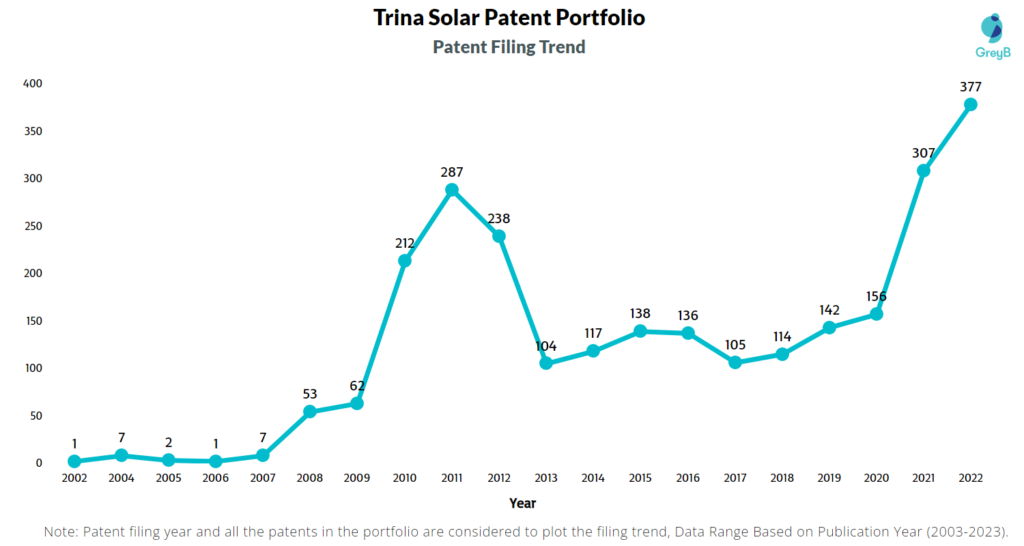
Source: Insights;Gate
Trina Solar has filed the maximum number of patents in China, followed by Australia and Spain. China seems to be its main R&D center.
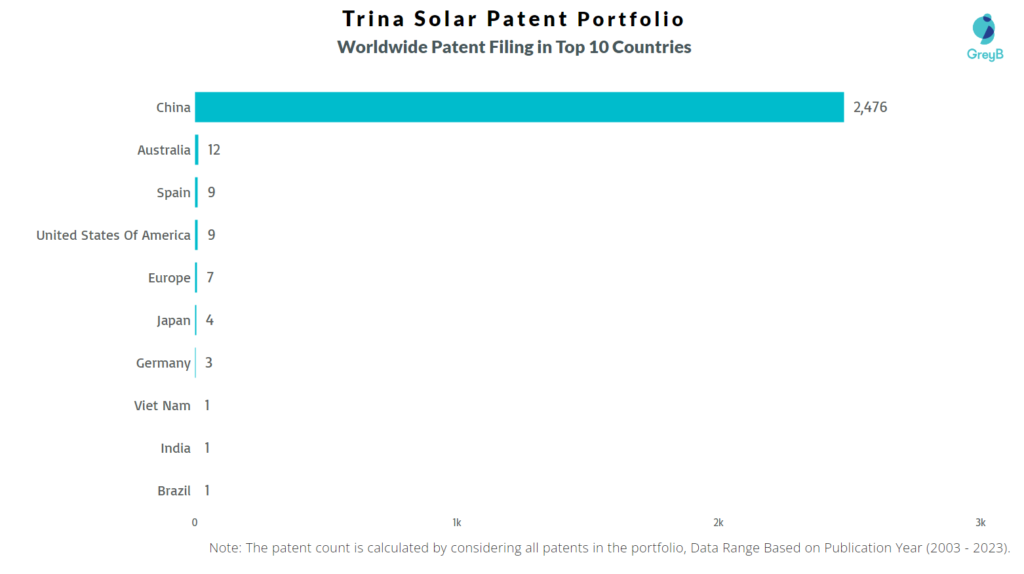
Source: Insights;Gate
Read more about Trina Solar’s patent portfolio here.
7. Enel Green Power S.p.A.
Enel Green Power S.p.A. is a subsidiary of the Italian multinational energy company Enel. It specializes in generating power from renewable resources, including solar, wind, hydroelectric, and geothermal.
The company has made substantial contributions to the solar energy industry, particularly from 2020 to 2023. In 2022, it set new records in renewable capacity, including a significant portion of solar power. It also built 5,223 MW of new renewable capacity, including 2,622 MW from solar, and generated around 124 TWh of energy, of which more than 50% (66 TWh) was from wind and solar power.
This growth was part of their broader strategy to increase their renewable capacity, aiming for 75 GW by 2025.
Enel Green Power’s subsidiary, 3SUN, unveiled three new photovoltaic modules in 2023 featuring their 3SUN CORE-H heterojunction technology. This technology combines crystalline and amorphous silicon layers, achieving a world-record commercial cell efficiency of 24.63%.
The “TANGO” project at 3SUN aims to significantly increase its production capacity, developing HJT and Tandem photovoltaic modules combining heterojunction and perovskite technology.
Enel Green Power focuses on sustainability, being the first in Chile to stop using coal for electricity generation in 2022 and aiming for a Science Based Targets initiative (SBTi) certified target of 72 gCO₂eq/kWh by 2030. The company was ranked number one in the Corporate Knights’ Carbon Reduction 20 index for its significant CO₂ emission reductions while expanding its workforce and market value through renewable energy investments and grid modernization.
Research and Development
Enel Green Power has established a new benchmark by constructing 5,223 megawatts (MW) of new renewable capacity, including the installation of 387 megawatts (MW) of battery energy storage systems (BESS). This expansion comprised over 80 plants, primarily solar (2,622 MW) and wind (2,160 MW). Moreover, Enel Green Power set three additional global milestones:
- About 7,200 MW of projects are under construction (including 900 MW of battery storage)
- Generation of approximately 124 TWh from renewable sources
- A development pipeline of around 455 GW
In 2022, Enel Green Power also partnered with Vulcan Energy to explore the potential of geothermal lithium, utilizing the strategic “Cesano” license near Rome. This collaboration focuses on research in geothermal lithium extraction and development. The European Union supported Enel Green Power’s initiative to transform 3SUN into a solar panel Gigafactory in Catania, Sicily. This project aims to make 3SUN one of Europe’s largest factories for producing high-performance double-sided photovoltaic modules, enhancing efficiency standards and panel reliability.
Enel Green Power’s strategic plan, Looking ahead to 2023-2025, emphasizes sustainable electrification and a strategic repositioning in six “core” countries. The company aims for 75% of its energy to be renewable within three years. It also supports the scaleup of Power to Hydrogen, a startup focused on making green hydrogen competitive with fossil fuels, particularly for hard-to-decarbonize industries. This collaboration involves validating Power to Hydrogen’s technology and attracting partners and investors through Enel’s NextHy Booster Program.
Enel Green Power’s 3SUN company in Catania unveiled three new photovoltaic modules, M40, M40 BOLD, and B60, at the Intersolar Europe 2023 trade show. Based on the 3SUN CORE-H heterojunction technology, these modules promise superior efficiency, performance, and reliability. Furthermore, 3SUN is developing “Tandem” technology with CEA/INES, combining heterojunction and perovskite to convert a broader range of the solar spectrum into electricity. The Tandem technology recently achieved a record efficiency of 27.1% in a 9-square-centimeter cell during the R&D phase.
Enel Green Power is also executing 26 projects in Italy, including solar parks, storage systems, and wind farms, thanks to the acceleration of permitting processes.
Innovative Technology
Green Hydrogen
In 2022, Enel Green Power North America and NextChem have inked a Memorandum of Understanding (MOU). It is to assist the production of green hydrogen by electrolysis in the United States. Enel utilized the hydrogen technology and technical skills that NextChem possesses to expand its green hydrogen business in the United States.
AI to Design Energy Networks
The company established the new artificial intelligence (AI) and robotics lab in Tel Aviv in September 2022. The lab is dedicated to developing artificial intelligence (AI) and robots to design energy networks and renewable energy sources. Enel Green Power and Enel Grids jointly manage this innovative program. It is the fourth one the Group has undertaken in Israel.
Control & Motoring Room that Operates 24/7
An innovative Control & Motoring Room was introduced by Enel in 2022, marking the first time that Greece has ever seen such a facility. A team of highly skilled experts, including specialized engineers and data analysts, are employed in the Control and Monitoring Room. The Room operates 365 days a year, 24/7, which means it is open around the clock. The Control and Monitoring Room crew can remotely administer and monitor the systems.
Enel Green Power also submitted a patent application for an industrial invention and a design patent in 2022 for a solution to automate the installation of photovoltaic panels in the field.
Sustainability Initiatives
The solar giant aims to achieve zero emissions by 2040. In its Sustainability Plan for 2023-2025, it pledges to consider all emissions and achieve “No Net Loss” in biodiversity for new infrastructure from 2030. As part of the UN’s “Ambition for 1.5 °C” program, Enel aligns its business model with the Paris Agreement’s objectives to limit global temperature rise within 1.5 °C. The company formulated a decarbonization plan in 2022 that encompasses direct and indirect emissions across its value chain. This plan, approved by the Science-Based Targets program, aims to cut all GHG emissions by about 99% by 2040.
Clean Electrification And GHG Scopes
Enel’s strategy is supported by renewable energy generation, secure and reliable grids, and the clean electrification of customer consumption. The company has set specific goals for 2030, including an 80% reduction in GHG Scope 1 emission intensity relative to power generation and a 78% reduction in GHG Scope 1 and 3 emissions intensity relative to Integrated Power compared to 2017 levels. It also aims for a 55% reduction in absolute GHG Scope 3 emissions of Gas Retail by 2030.
Digitalized Grids And 3SUN Gigafactory
The company’s clean electrification strategy is backed by developing renewable energies and expanding digitalized grids. This enables the integration of larger quantities of energy from renewable sources, providing high-quality, safe, and reliable service. Enel’s 3SUN Gigafactory in Catania is also on course to become Europe’s largest photovoltaic panel factory, with an annual production capacity increasing to 3 GW by July 2024.
Sustainable Economic And Environmental Development
Enel Green also prioritizes protecting natural capital and biodiversity, combating climate change, and contributing to sustainable economic development. One of its efforts includes reducing water consumption for panel cleaning in solar plants, especially in arid regions.
Innovation, the circular economy, digitalization, and sustainable finance are key accelerators in Enel’s sustainability strategy. In 2022, the company launched 194 proofs of concept and adopted 60 solutions in business, demonstrating a 56% improvement in circularity. Digital platforms play a crucial role in Enel’s strategy, facilitating the emergence of new operational and business models like the sharing economy.
Human Rights And Employee Training
Enel Green’s commitment to human rights reflects an integrated approach that considers the needs of stakeholders across the value chain. The company focuses on the health and safety of individuals working with and for Enel, supporting this through safety processes, training, collaboration with contractors, and continuous quality controls. A solid governance framework underpins all business processes and activities, ensuring the application of principles such as transparency, fairness, and integrity.
Collaborative Partnerships
Wellington Management
In 2021, Enel Green Power and Wellington Management partnered and signed a 10-year virtual power purchase agreement (VPPA). The deal is to supply 11 MW of energy to the grid from the Rockhaven wind project. It covers roughly 48 GWh of wind energy annually. The renewable energy certificates (RECs) associated with it are comparable to preventing the release of 30,000 tons of carbon dioxide into the atmosphere annually.
Qatar Investment Authority
In 2021, Enel Green Power and a subsidiary of the Qatar Investment Authority made a deal to work together on financing, building, and running green energy projects in Sub-Saharan Africa. The two companies also signed an agreement stating that QIA would buy 50% of EGP’s share in projects in South Africa and Zambia that are already operational and under construction, with a capacity of about 800 MW.
International Renewable Energy Agency
In 2022, Enel Green Power collaborated with IRENA to speed up the energy transition. IRENA and Enel Green Power signed a partnership agreement to expedite the transition to a more sustainable energy system.
The primary focus of the collaboration is related to the field of renewable energy generation, coordination between generation and transmission, green hydrogen, and energy storage. In addition, it includes the creation of regulatory, legal, financial, and market instruments to promote further adoption of renewable energy sources in a sustainable manner.
“The agreement with IRENA is a new and important opportunity for us to accelerate the energy transition through energy generation that is increasingly green, thanks to joint efforts to boost the development of energy storage combined with renewable energy plants, green hydrogen, and the commitment to ensure access to energy for all, in the name of a transition that leaves no one behind. Through this partnership, we will be able to leverage greater international coordination to adopt new and more suitable regulatory, financial, and legal solutions to support decarbonization.” – Salvatore Bernabei, CEO of Enel Green Power.
Patent Analysis
Enel has 1170 patents globally, of which 727 have been granted, and more than 64% of patents are active. US20030216971A1 is the most popular patent in the Enel portfolio. It has received 302 citations from companies like IBM, Digital Lumens, and Microsoft.
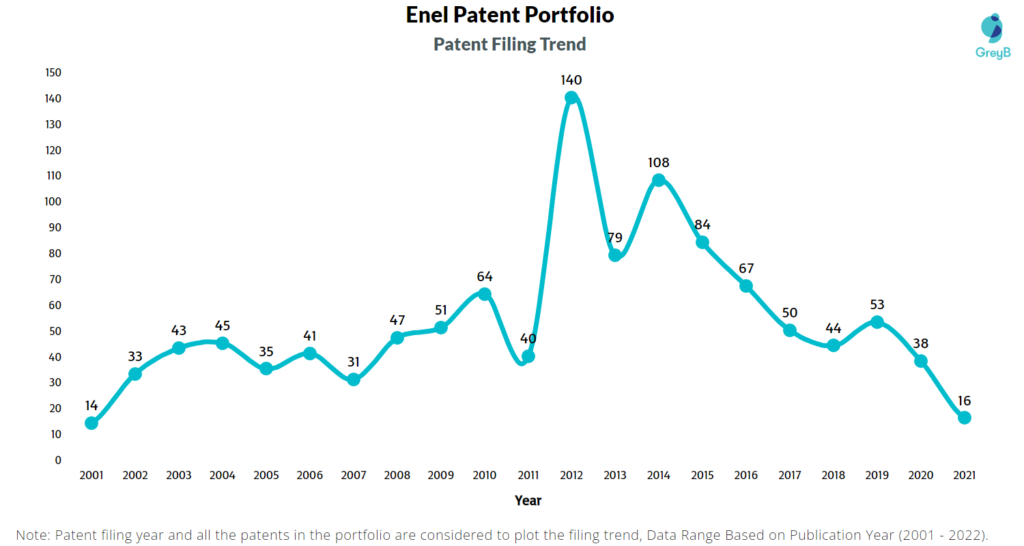
Source: Insights;Gate
Enel has filed the maximum number of patents in the United States of America, followed by Europe and Spain. The USA and Italy seem to be the main R&D centers, and Italy is Enel’s country of origin.
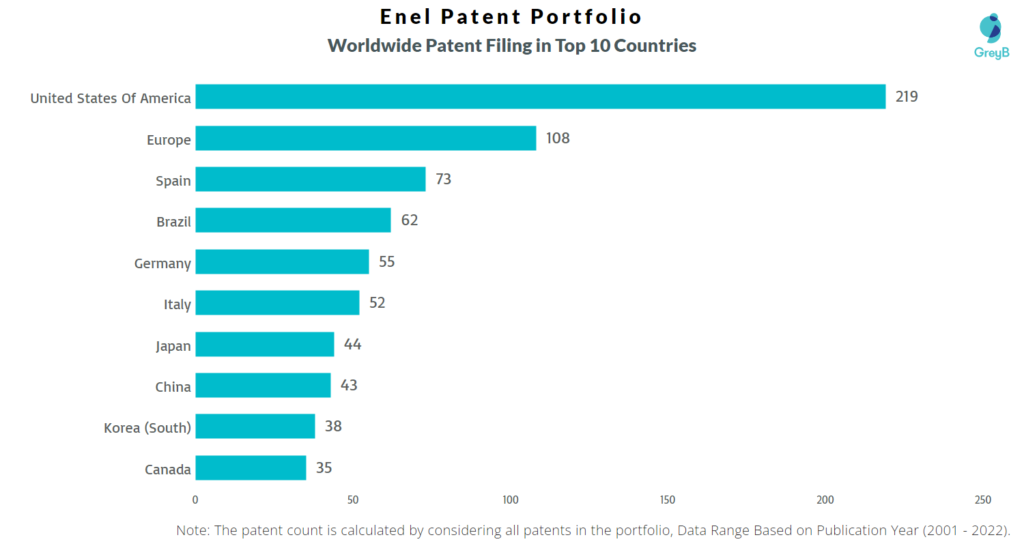
Source: Insights;Gate
Recommended reading: Which Five innovations are changing the solar game?
8. First Solar, Inc.
First Solar, Inc., is a leading American manufacturer of solar panels and a provider of utility-scale PV power plants. The company is known for its innovative use of cadmium telluride (CdTe) in its thin-film solar modules, setting itself apart in the industry. It was recognized as the fourth-largest solar company based on trailing revenue and was listed among the world’s most innovative companies by Fast Company in 2012.
The company has recently focused on advancing its technology and expanding its manufacturing capacity. It ramped up its second Series 6 module manufacturing plant in Malaysia and transitioned all its manufacturing plants to these large-area CdTe Series 6 modules in 2021.
First Solar achieved a production yield of 97.6% for Series 6 modules, further enhancing their manufacturing efficiency. The top module production bin was set to increase from 445W to around 500W. In 2023, the company acquired Evolar, a European firm specializing in perovskite technology, for $38M, marking a significant step in diversifying and advancing its technology portfolio.
Research and Development
First Solar Inc. has allocated around $270 million to establish an R&D innovation center in Perrysburg, Ohio, dedicated to exploring and developing new technologies in the solar energy field. This new facility, encompassing about 1.3 million square feet near their production plant in Perrysburg, will feature a state-of-the-art pilot manufacturing line. This line is designed to produce full-sized samples of advanced thin film and tandem photovoltaic (PV) modules.
Despite challenges in shipping and logistics and a quarterly net loss, the company remains optimistic about its long-term prospects, driven by strong product demand and a solid technology foundation. The expansion plans include enhancing the manufacturing capacity to approximately 10.7 GW by 2026 and investing an additional $200 million in upgrading their Ohio manufacturing facilities. This expansion will increase Ohio’s nameplate capacity to over 7 GW by 2025.
The new R&D facility will keep First Solar’s technology roadmap on track without disrupting its commercial manufacturing operations. It is designed to facilitate innovation in developing and producing high-performance thin film photovoltaic semiconductors, which are anticipated to be fundamental in the next generation of advanced photovoltaics. Alongside its facilities in the U.S., First Solar operates factories in Vietnam and Malaysia and is constructing a new manufacturing facility in India, which is projected to start operations in the second half of 2023. These expansion efforts aim to achieve over 20 GW of annual global manufacturing capacity by 2025.
In addition to these developments, as of 2023, First Solar has partnered with the REMADE Institute to initiate high-value recycling research and development projects. This collaboration focuses on developing recycling technologies for crystalline silicon modules and aims to enhance glass and aluminum recycling, thereby contributing to a more sustainable solar energy industry.
Innovative Technology
Thin Film CadTel (Cadmium Telluride)
Thin film CadTel (Cadmium Telluride) photovoltaic (PV) technology has shown various qualities since its introduction. These qualities encouraged First Solar to choose this technology over more conventional technologies such as crystalline silicon (c-Si).
Even though thin-film CadTel technology has made significant progress over the previous two decades, its full potential has not yet been achieved. First Solar’s research and product development teams anticipate that thin-film CadTel will be able to achieve a cell efficiency of 25% by 2025 and that there will be routes to achieve a cell efficiency of 28% by 2030.
After a series of workshops in 2017, First Solar, Colorado State University, the University of Toledo, and NREL formed the U.S. Manufacturing of Advanced Cadmium Telluride (US-MAC) photovoltaics consortium in March 2021. This group’s goal is to strengthen the U.S.’s position as a leader in solar technology.
Investment in Perovskite
First Solar completed the acquisition of Evolar AB, a European company at the forefront of perovskite technology, in 2023. As part of the deal, research will continue at Evolar’s lab in Uppsala, Sweden. This will be First Solar’s first R&D facility in Europe.
Series 7 modules
First Solar planned to start its new 3.3 GWdc facility in Ohio in the first half of 2023 with a $680 million investment. The new factory will likely make the much-anticipated Series 7 modules. It will also increase First Solar’s annual output in Ohio to 6 GWdc, making it the biggest fully vertically integrated solar production complex outside China.
Sustainability Initiatives
First Solar’s Series 7 solar modules have the industry’s lowest carbon and water footprints. These modules are approximately four times more efficient in carbon and water usage than standard crystalline silicon modules made in China. Moreover, the energy payback period of these modules is five times faster, significantly reducing their environmental impact.
Solar Power Initiatives
First Solar has sold around 50 GW of PV solar panels from 2002 to 2022. The company still had a significant backlog of about 77.8 GW in July 2023. Based on average global irradiance and grid power emissions, its products are estimated to replace 83 million metric tons of CO2eq per year for more than 30 years. This achievement equates to powering over 66 million homes, planting 1.4 billion trees, and conserving over 225 billion liters of water per year, equivalent to the volume of around 96,000 Olympic-sized swimming pools.
GHG Emission
The company has set ambitious goals to minimize its operational impacts. By 2028, First Solar aims to reduce its total scope 1 and scope 2 greenhouse gas (GHG) emissions by 34%, with a long-term goal of achieving net-zero GHG emissions by 2050, compared to its 2020 levels.
The company has a continued focus on reducing environmental impacts while enhancing the efficiency and effectiveness of its solar modules, positioning it as a leader in sustainable energy solutions.
Collaborative Partnerships
Silicon Ranch
In 2022, Silicon Ranch and First Solar announced that the companies would expand their 4-gigawatt master supply agreement (MSA). The agreement strengthens a joint commitment to enhance the domestic supply and encourage production processes with reduced carbon emissions.
Azure Power
In 2022, Azure Power signed a contract with First Solar to purchase 600 megawatts (MW) of high-performance, advanced thin film photovoltaic (PV) solar modules (DC). This was the first deal for production to be carried out at First Solar’s brand-new manufacturing plant in Tamil Nadu, India, which was scheduled for operation in the second half of 2023.
Based on the terms of the agreement, it is anticipated that Azure Power will receive the Series 7 photovoltaic (PV) solar modules manufactured by First Solar between 2023 Q4 and 2025.
UbiQD, Inc.
In 2023, First Solar and UbiQD, Inc., a nanotechnology business, entered into a joint development agreement. This agreement aims to further work on developing strategies that could merge fluorescent quantum dot technology into advanced solar modules. Since the beginning of 2022, the two firms have been engaged in exploratory work.
Hunter McDaniel, UbiQD CEO, said, “With First Solar’s domain expertise and leadership position in multi-gigawatt-scale solar, we are excited to be working together on the potential to enhance panel efficiency using quantum dot technology. If successful, this application in solar modules will be a perfect example of the broad applicability of our core technology. With emerging applications in food and energy, these novel nanomaterials are proving to be a key tool in humanity’s urgent response to climate change and further sustainable economic development.”
Patent Analysis
First Solar has 1621 patents globally, of which 616 have been granted, and more than 34% of patents are active. US6959517B2 is the most popular patent in the First Solar portfolio. It has received 330 citations so far from companies like Powermount Systems, GE, and Zep Soar.
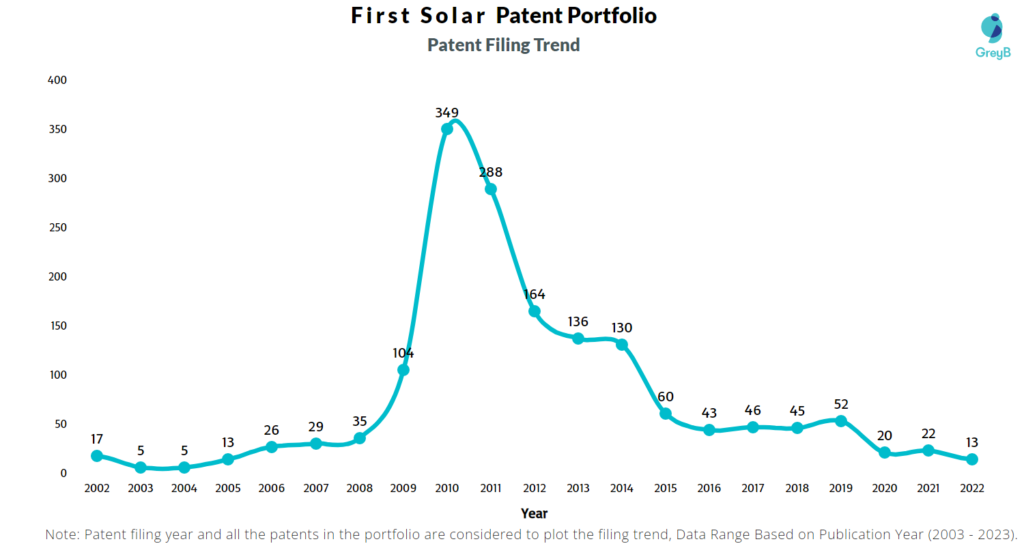
Source: Insights;Gate
First Solar has filed the maximum number of patents in the USA, followed by Europe (EPO) and India. The USA seems to be its main R&D center.
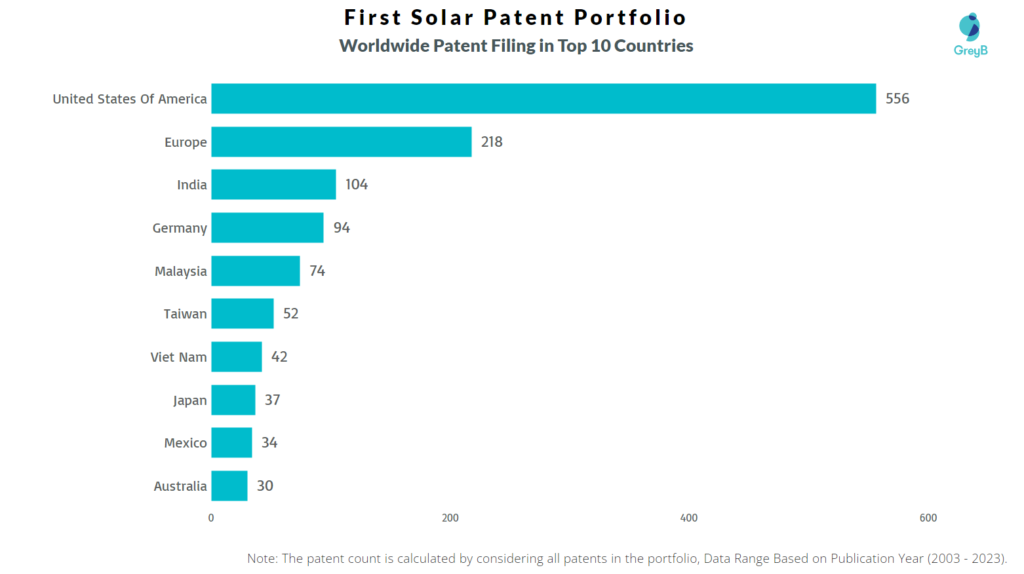
Source: Insights;Gate
Read more about First Solar’s patent portfolio here.
9. JinkoSolar Holding Co., Ltd.
JinkoSolar Holding Co., Ltd. is a distinguished leader in the global solar PV industry, renowned for its advanced solar panel manufacturing.
During the third quarter of 2023, JinkoSolar module shipments increased by 20.4% sequentially and 107.9% year-over-year. This surge in shipments was primarily due to their advanced N-type technology. By the end of the third quarter, JinkoSolar had achieved a significant milestone by becoming the first module manufacturer globally to have delivered 190 GW of solar modules, covering over 190 countries and regions.
One of JinkoSolar’s key technological advancements is its industry-leading N-type TOPCon cell technology. By the third quarter of 2023, the maximum laboratory conversion efficiency of its N-Type Wafer Solar Cells hit a world record of 26.89%, with mass production efficiency reaching 25.6%. This technological edge has placed JinkoSolar at the forefront of solar module shipment delivery worldwide, accounting for 57% of N-type module Shipments in the solar industry.
The company is also focused on expanding its production capacity. By the end of the third quarter of 2023, it had over 55GW of N-type cell production capacity, with a plan to reach about 70GW by the end of the year. JinkoSolar has also initiated construction for integrated projects in Shanxi, China, set to commence production in the first half of 2024, adding an incremental 28GW of wafer cell and module integrated capacity. The company plans to increase wafer and module overseas production in 2024, adding another 12GW production capacity.
Research and Development
JinkoSolar’s R&D Center, recognized for its innovation in photovoltaics, benefits from a vertically integrated industry chain. This strategic approach has led to JinkoSolar being acknowledged by several national research platforms, such as the National Technology Innovation Demonstration Enterprise, the National Enterprise Technology Center, and the National Postdoctoral Research Workstation. The company houses 15 other research platforms and an innovation team at the provincial level.
JinkoSolar had doubled its investments in clean technology, focusing primarily on R&D by the end of 2022. Their R&D team, comprising 1,902 technical talents, includes 20 PhDs and 200 postgraduates from prestigious universities in the United States and abroad, and experienced core engineers. This team’s expertise is reflected in the impressive results of JinkoSolar’s R&D Center module laboratory, which achieved commendable outcomes in the national evaluation of PV Module Testing Accuracy.
JinkoSolar’s R&D 182 mm n-type monocrystalline silicon solar cell reached a record 26.89% maximum solar conversion efficiency. The company has been recognized as the 2023 Overall Highest Achiever for the fourth consecutive year in the Renewable Energy Testing Center’s PV Module Index Report. This honor acknowledges their solar module reliability, performance, and quality excellence.
JinkoSolar’s R&D strategy is focused on enhancing mono technology. It has planned a significant capacity expansion, including an 8GW production base for high-efficiency modules and a 25GW mono-pulling and squaring project in Leshan City. The company is also renovating old production lines and upgrading capacity as needed, phasing out outdated technologies in favor of high-efficiency PERC or TOPCon solutions. It has prioritized innovative products like the Tiger module series, which features a unique wafer size and integrates advanced technologies to boost efficiency and reduce costs.
JinkoSolar’s latest innovation in bifacial module technology, which set a new world record for efficiency, highlights its forward-thinking approach. The Swan transparent bifacial module, a first in the industry, demonstrates the company’s ability to integrate high-efficiency cells with innovative materials to achieve substantial cost savings and improved energy generation.
Innovative Technology
JinkoSolar continues introducing new products with an efficient development cycle that includes creativity, research and development, and batch manufacturing.
Transformation Projects
By implementing 95 technological transformation projects in 2022, the company was able to save roughly 57.54 million kWh of power. These projects included introducing a waste heat recovery system and converting an air compressor cooling system.
Module Recycling
The company is making continuous efforts to advance technological innovation in the module recycling sector. A recycling demonstration production line with a capacity of 12 megawatts has been constructed for JinkoSolar’s modules.
Tiger Neo family And N-type TOPCon Technology
The Tiger Neo family, part of JinkoSolar’s product line introduced in 2023, represents a significant advancement in solar panel technology. The second generation of this family includes three series of solar panels, each distinguished by size, power output, and efficiency.
The 54-cell model offers 445Wp (Watt-peak) power output with an efficiency of 22.27%, the 72-cell model provides 615Wp with 23.23% efficiency, and the 78-cell model delivers 635Wp with an efficiency of 22.72%. These panels employ n-type TOPCon (Tunnel Oxide Passivated Contact) technology, known for its high efficiency and performance. The n-type TOPCon technology is recognized for its superior reliability and contributes to the high performance of the Tiger Neo panels. The company has beaten the global records for solar cell efficiency and module power 22 times, particularly in N-type TOPCon in 2022.
SUNTANK
JinkoSolar Australia Holding Co PTY. LTD. stated in 2022 that it had launched its residential energy storage system known as “SUNTANK” for the Australian market. This system also served as a significant support in the development of PV+ ESS solutions and provided more reliable electricity to satisfy the needs of residential customers.
Sustainability Initiatives
JinkoSolar, aligned with China’s commitment to the lowest CO2 emissions before 2030 and achieving carbon neutrality by 2060, has taken significant steps in addressing climate change.
Paris Agreement’s Objectives
The company is making efforts toward fulfilling the Paris Agreement’s objective of limiting global temperature rise to 1-1.5° C above pre-industrial levels. It has signed and submitted the Business Ambition for 1.5°C Commitment Letter to the Science Based Targets initiative (SBTi), pledging to set science-based goals and work towards net-zero emissions across its value chain by 2050.
Environmental Management Systems (EMS)
In managing emissions, chemicals, and pollution, JinkoSolar has developed and improved Environmental Management Systems (EMS) per ISO 14001 standards. This is evident in their 2022 additions, including the Chuxiong Base and Hefei Base, which have achieved ISO 14001 certification. The company’s proactive approach in 2022 led to saving over 57.54 million kWh of electricity by implementing 95 technological transformation projects, such as introducing a waste heat recovery system and revamping an air compressor cooling system. The company has implemented Volatile Organic Compounds (VOCs) treatment systems at various bases to manage organic exhaust gas in an effective manner.
Net-Zero Target Validation by SBTi
JinkoSolar became the first PV company in the world to have its net-zero targets validated by the SBTi, making it the second company in mainland China and the third in the global semiconductor industry to achieve this status. The company is also a part of the RE100 green initiative and is committed to setting net-zero targets. By the end of 2023, JinkoSolar had delivered more than 200 GW of solar modules globally, significantly contributing to carbon reduction.
Collaborative Partnerships
Failte Solar
In 2023, JinkoSolar signed a Memorandum of Understanding (MoU) with Failte Solar to provide 200MW of Tiger Neo modules. Jointly developing the high-end distributed PV market in Ireland, JinkoSolar and Failte Solar will work together on a wide range of mutually beneficial areas, such as goods and localized services.
Abhilash Borana, Founder and CEO of Failte Solar Ireland, said, “By combining Failte Solar’s local expertise and JinkoSolar’s global reach, this partnership is poised to drive significant growth in the solar energy market across Europe. This collaboration with JinkoSolar is a testament to our unwavering commitment to sustainability and innovation. We are excited to leverage JinkoSolar’s expertise and resources to further our mission of providing accessible and sustainable solar solutions.”
Go Solar Group
In 2023, the company inked a strategic distribution agreement with Go Solar Group Pty. Ltd., one of the primary distributors of JinkoSolar in Australia. As a part of this agreement, 600MW of high-efficiency Tiger Neo N-type modules are scheduled to be shipped in 2023, 2024, and 2025. The Australian market has been getting N-type panels from JinkoSolar for a while now.
Imperium
In 2023, JinkoSolar and Sterling Bank Limited’s Imperium Initiative collaborated to address the difficulties that photovoltaic (PV) distributors and solar developers in Nigeria are experiencing with imports. The collaboration intends to overcome significant foreign exchange restrictions and operational constraints, with the ultimate goal of promoting the adoption of solar energy in the country.
Patent Analysis
Jinko Solar has 85 patents globally, of which 23 have been granted, and more than 97% of patents are active.
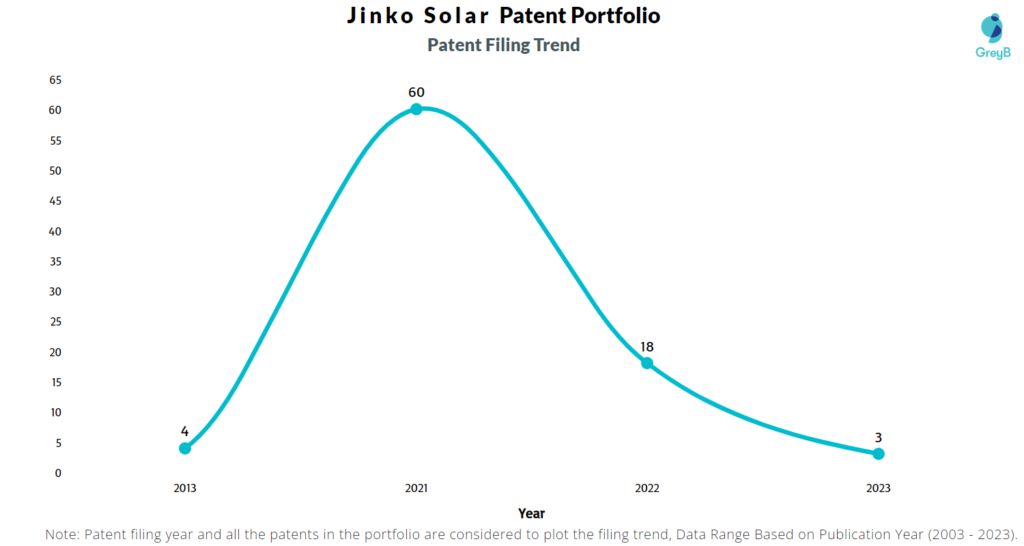
Source: Insights;Gate
Jinko Solar has filed the maximum number of patents in China, followed by Japan and Australia. China seems to be the main focused R&D center and the country of origin of Jinko Solar.
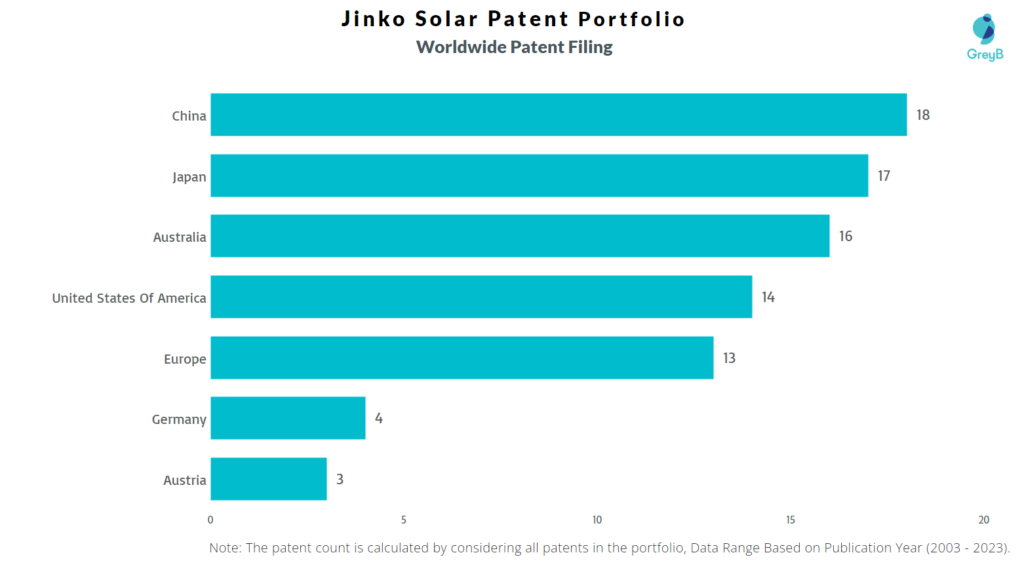
Source: Insights;Gate
Read more about JinkoSolar’s patent portfolio here.
10. Canadian Solar Inc.
Canadian Solar is known for innovative solutions in module manufacturing and energy projects. Its major achievements include developing high-efficiency solar modules and expanding its presence in various global markets, significantly lowering the cost of solar energy and making it more accessible.
The company launched its Series 7 high-power, high-efficiency modules in 2020, offering one of the industry’s highest power outputs. Further, in 2021, Canadian Solar set a new world record for solar cell efficiency.
It expanded its footprint in solar energy storage solutions in 2022, introducing innovative battery storage systems to complement its solar modules.
Research and Development
Canadian Solar Inc. has been involved in a three-year research project in China, focusing on efficient recycling processes for silicon photovoltaic modules, including the disassembly and recycling of cells. The company made significant strides with the development of TOPCon (Tunnel Oxide Passivated Contact) modules to enhance the efficiency of solar technology. These high-efficiency modules, boasting up to 25.0% cell conversion efficiency, began mass production in early 2023, and the company anticipated that TOPCon shipments would account for about 30% of its total shipments in 2023.
The company aims to increase the power output of TOPCon modules from 690W in 2022 to over 710W by 2025. These advancements enhance the modules’ power and efficiency and contribute to reducing the energy and water used in production, thereby lowering the Levelized Cost of Energy (LCOE) for solar PV projects. It is developing fluoride-free modules to address the recycling challenges in the industry, targeting a recycling rate of more than 95%. The company plans to introduce these modules to the market in 2024.
This solar giant began the mass production of N-type TOPCon modules up to 690W in Q1 2023, expecting to increase the highest module power to over 700W. The company also launched SolBank, a proprietary designed and manufactured energy storage battery solution for utility-scale applications, and the EP Cube, a sleek all-in-one residential energy storage solution, in September 2022. It has a portfolio of 2,134 authorized patents globally. Their PV research centers focus on cells, modules, and solar systems, backed by 595 experienced researchers in the R&D department.
Innovative Technology
Canadian Solar’s photovoltaic (PV) technologies have significantly enhanced the efficiency and durability of solar modules while reducing the costs associated with their production.
Technology developments were the primary drivers of the year-over-year decrease in energy intensity that the company experienced in 2022. For example, Canadian Solar shifted to N-type TOPCon modules, which boosted their product power output and thus lowered the energy use per watt.
Thinner Wafers and Smaller Diamond Wires
Wafering technologies are progressing toward producing thinner wafer products and even smaller diamond wires. In 2022, the company reduced the diameter of diamond wires and wafer thickness to 40um and 150um, respectively. It started to reduce these further to 26um and 100um by 2025.
SolBank
Canadian Solar’s CSI Energy Storage released the SolBank in 2022. It is a custom-designed and built energy storage battery system for large-scale applications. CSI Energy Storage stated that by the end of 2023, it will be able to make 10 GWh of batteries instead of the current 2.5 GWh. Active balance BMS (Battery Management System), liquid cooling, and humidity control are a few technologies in the SolBank.
Sustainability Initiatives
Canadian Solar Inc. has recently joined the United Nations Global Compact, adhering to its human rights, labor, environment, and anti-corruption principles. It also made strides in reducing greenhouse gas emissions, energy and water use, and waste intensity, aiming for significant reductions in these areas by 2027.
Equal Work Opportunities
The company focuses on increasing the representation of women and people with disabilities in their workforce. It has also implemented various ISO certifications, showcasing its dedication to quality management, environmental protection, energy conservation, and operational safety. The company developed a Canadian Solar Green Financing Framework, which includes green bonds and loans to support renewable power generation and storage assets.
GHG Emission
Canadian Solar reduced greenhouse gas emissions by 3%, energy usage by 7%, water usage by 30%, and waste intensity by 15% in 2022. The company has set goals to reduce its carbon intensity by 7% in 2023 and 28% by 2027 compared to 2022. Its long-term goal is to use 100% renewable energy for all operations globally by 2030. Most company factories are located in China, where the company benefits from favorable regulations for green electricity trading and power purchase agreements. This enabled them to purchase 16,000 MWh of green energy for a factory in Zhejiang Province in 2022.
Net-zero Goals
The company submitted a commitment letter to the Science Based Targets initiative (SBTi) to establish near-term and net-zero science-based climate targets. It also completed the CDP Climate Change 2023 Questionnaire, demonstrating adherence to the Task Force for Climate-related Financial Disclosures (TCFD) recommendations.
Collaborative Partnerships
Copenhagen Infrastructure Partners (CIP)
In 2023, CSI Solar, a subsidiary of Canadian Solar, was chosen by Copenhagen Infrastructure Partners (CIP) to deliver the Summerfield battery storage project in South Australia. The project, a 240 MW DC energy storage solution with a two-hour storage duration, is expandable based on market needs and marks CIP’s first major battery venture in Australia. CSI Solar’s e-STORAGE unit will supply the SolBank battery energy storage systems, offering integration, commissioning, and long-term operational services. The SolBank technology, designed for utility-scale applications, uses lithium-iron-phosphate chemistry and incorporates advanced safety and performance features.
EDF Renewables North America
In 2023, Canadian Solar and EDF Renewables North America signed a multi-year agreement to sell up to 7 gigawatts (GW) of high-efficiency N-type TOPCon solar modules. These modules will be made at Canadian Solar’s new factory in Mesquite, Texas. As part of the deal, Canadian Solar will send EDF Renewables its latest, most efficient N-Type TOPCon (Tunnel Oxide Passivated Contact) solar panels to help with their U.S. project pipeline from 2024 to 2030.
Municipal Government of Hohhot
In 2023, Canadian Solar’s CSI Solar signed a multi-year investment deal with the municipal government of Hohhot, China. This partnership is meant to make it easier for Canadian Solar to carry out its plans to increase its capacity and integrate its businesses across multiple levels. The first part of the investment involves building up manufacturing capacities of 20 GW of ingot, 10 GW of wafer, 40 GW of crucible, 5 GW of module, 10 GW of cell, and 5 GW of ancillary products.
Patent Analysis
Canadian Solar has 11 patents globally, of which two have been granted, and more than 81% are active.
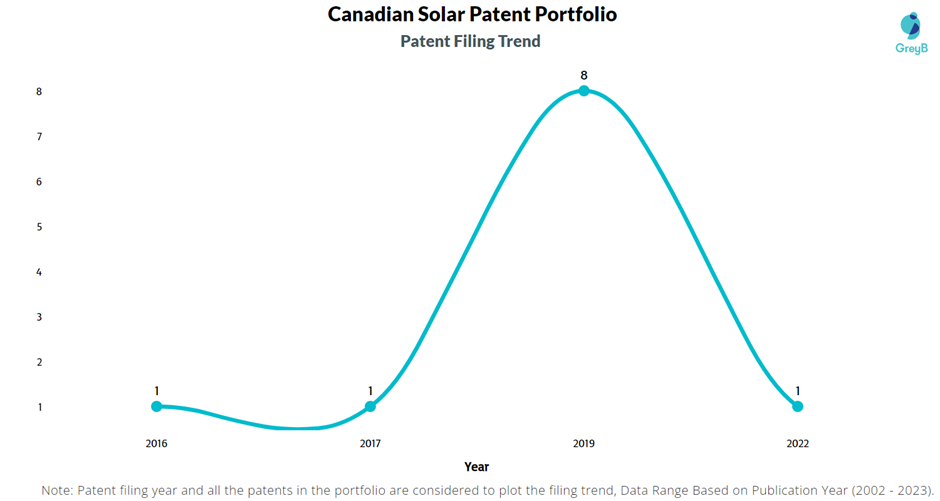
Source: Insights;Gate
Canadian Solar has filed the maximum number of patents in Canada, followed by the United States Of America. China seems to be its main R&D center.
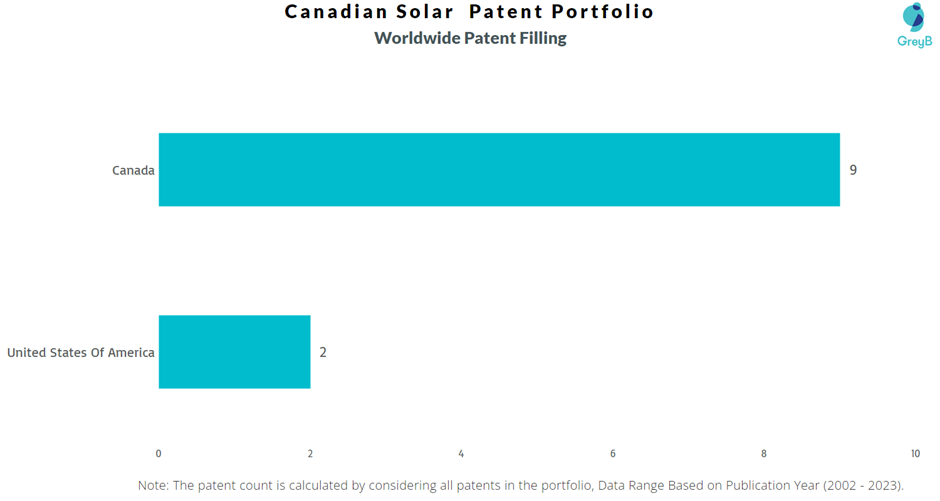
Source: Insights;Gate
Read more about Canadian Solar’s patent portfolio here.
Conclusion
Solar energy has become more accessible and cost-effective with innovations in photovoltaic cell technology. These technological improvements have enhanced efficiency and reduced costs, aligning with the growing trend of green practice adoption. This trend is complemented by the increasing awareness and adoption of green practices among individuals and corporations, further fueling the demand for solar solutions.
Government policies and incentives worldwide support renewable energy, providing a favorable regulatory environment for expanding the solar industry.
As battery storage technology advances, overcoming the challenge of intermittency, solar power is poised to become a more reliable and significant contributor to the global energy mix.
This shift towards solar energy aligns with global efforts to combat climate change and represents a substantial economic opportunity, potentially creating numerous jobs and fostering sustainable development.
While this report has highlighted leading companies’ historical and current strategies in the solar energy sector, the real advantage lies in anticipating their future actions before they become widely known. Engaging in competitive analysis and studying the technological landscape are crucial to gaining this edge.
Contact our industry experts before planning your next business move.
Authored By: Naveen Kumar, Market Research

